Home Blog Education How to Prepare Your Scientific Presentation

How to Prepare Your Scientific Presentation
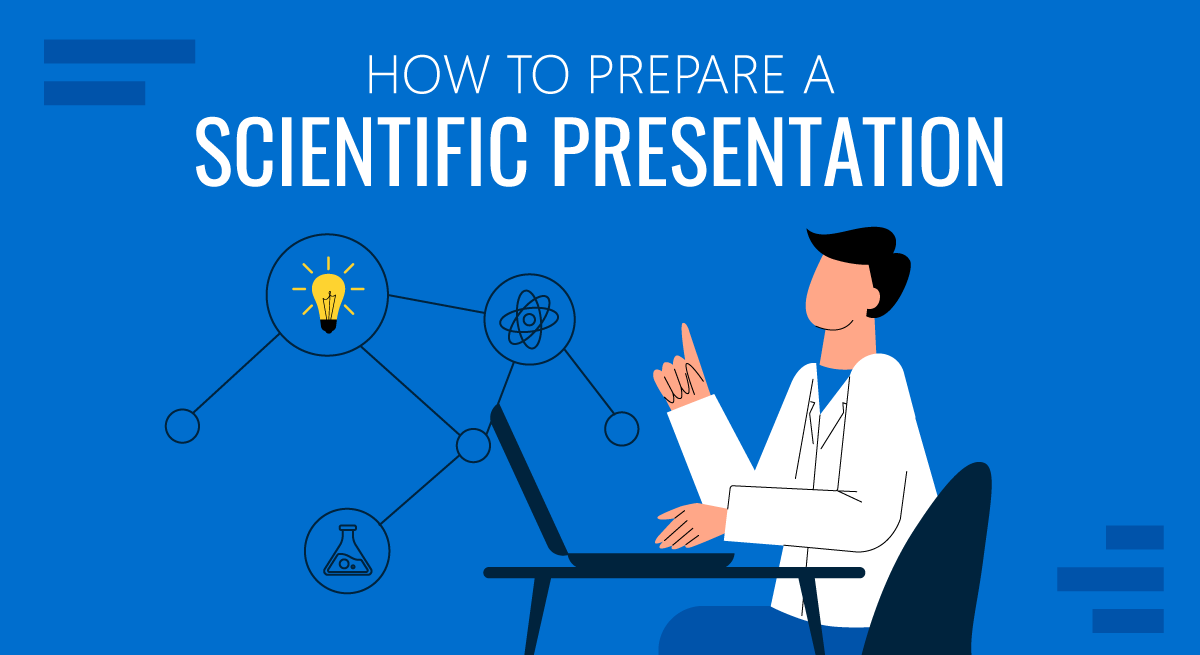
Since the dawn of time, humans were eager to find explanations for the world around them. At first, our scientific method was very simplistic and somewhat naive. We observed and reflected. But with the progressive evolution of research methods and thinking paradigms, we arrived into the modern era of enlightenment and science. So what represents the modern scientific method and how can you accurately share and present your research findings to others? These are the two fundamental questions we attempt to answer in this post.
What is the Scientific Method?
To better understand the concept, let’s start with this scientific method definition from the International Encyclopedia of Human Geography :
The scientific method is a way of conducting research, based on theory construction, the generation of testable hypotheses, their empirical testing, and the revision of theory if the hypothesis is rejected.
Essentially, a scientific method is a cumulative term, used to describe the process any scientist uses to objectively interpret the world (and specific phenomenon) around them.
The scientific method is the opposite of beliefs and cognitive biases — mostly irrational, often unconscious, interpretations of different occurrences that we lean on as a mental shortcut.
The scientific method in research, on the contrary, forces the thinker to holistically assess and test our approaches to interpreting data. So that they could gain consistent and non-arbitrary results.
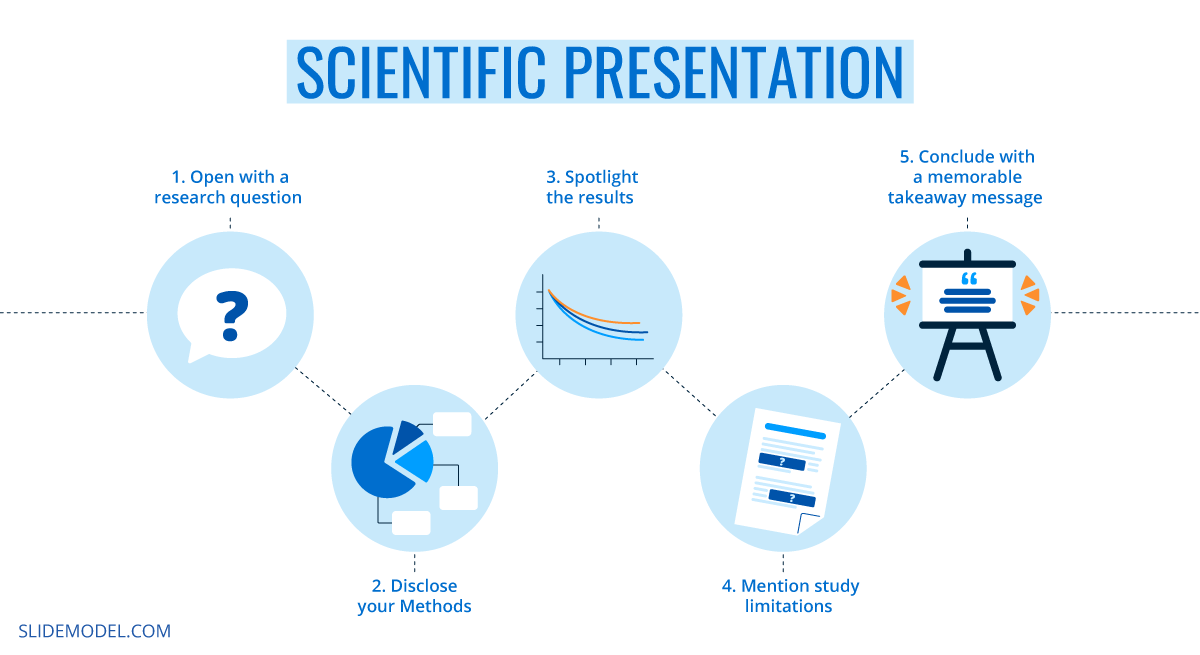
The common scientific method examples are:
- Systematic observation
- Experimentation
- Inductive and deductive reasoning
- Formation and testing of hypotheses and theories
All of the above are used by both scientists and businesses to make better sense of the data and/or phenomenon at hand.
The Evolution of the Scientific Method
According to the Stanford Encyclopedia of Philosophy , ancient thinkers such as Plato and Aristotle are believed to be the forefathers of the scientific method. They were among the first to try to justify and refine their thought process using the scientific method experiments and deductive reasoning.
Both developed specific systems for knowledge acquisition and processing. For example, the Platonic way of knowledge emphasized reasoning as the main method for learning but downplayed the importance of observation. The Aristotelian corpus of knowledge, on the contrary, said that we must carefully observe the natural world to discover its fundamental principles.
In medieval times, thinkers such as Thomas Aquinas, Roger Bacon, and Andreas Vesalius among many others worked on further clarifying how we can obtain proven knowledge through observation and induction.
The 16th–18th centuries are believed to have given the greatest advances in terms of scientific method application. We, humans, learned to better interpret the world around us from mechanical, biological, economic, political, and medical perspectives. Thinkers such as Galileo Galilei, Francis Bacon, and their followers also increasingly switched to a tradition of explaining everything through mathematics, geometry, and numbers.
Up till today, mathematical and mechanical explanations remain the core parts of the scientific method.
Why is the Scientific Method Important Today?
Because our ancestors didn’t have as much data as we do. We now live in the era of paramount data accessibility and connectivity, where over 2.5 quintillions of data are produced each day. This has tremendously accelerated knowledge creation.
But, at the same time, such overwhelming exposure to data made us more prone to external influences, biases, and false beliefs. These can jeopardize the objectivity of any research you are conducting.
Scientific findings need to remain objective, verifiable, accurate, and consistent. Diligent usage of scientific methods in modern business and science helps ensure proper data interpretation, results replication, and undisputable validity.
6 Steps of the Scientific Method
Over the course of history, the scientific method underwent many interactions. Yet, it still carries some of the integral steps our ancestors used to analyze the world such as observation and inductive reasoning. However, the modern scientific method steps differ a bit.
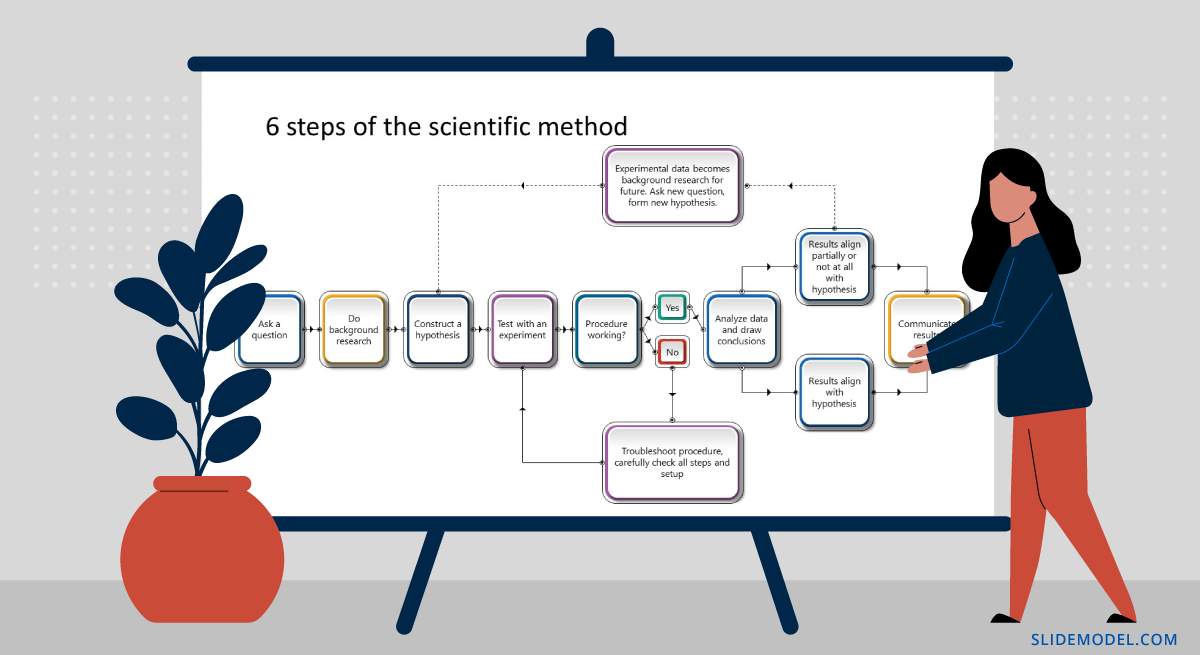
1. Make an Observation
An observation serves as a baseline for your research. There are two important characteristics for a good research observation:
- It must be objective, not subjective.
- It must be verifiable, meaning others can say it’s true or false with this.
For example, This apple is red (objective/verifiable observation). This apple is delicious (subjective, harder-to-verify observation).
2. Develop a Hypothesis
Observations tell us about the present or past. But the goal of science is to glean in the future. A scientific hypothesis is based on prior knowledge and produced through reasoning as an attempt to descriptive a future event.
Here are characteristics of a good scientific hypothesis:
- General and tentative idea
- Agrees with all available observations
- Testable and potentially falsifiable
Remember: If we state our hypothesis to indicate there is no effect, our hypothesis is a cause-and-effect relationship . A hypothesis, which asserts no effect, is called a null hypothesis.
3. Make a Prediction
A hypothesis is a mental “launchpad” for predicting the existence of other phenomena or quantitative results of new observations.
Going back to an earlier example here’s how to turn it into a hypothesis and a potential prediction for proving it. For example: If this apple is red, other apples of this type should be red too.
Your goal is then to decide which variables can help you prove or disprove your hypothesis and prepare to test these.
4. Perform an Experiment
Collect all the information around variables that will help you prove or disprove your prediction. According to the scientific method, a hypothesis has to be discarded or modified if its predictions are clearly and repeatedly incompatible with experimental results.

Yes, you may come up with an elegant theory. However, if your hypothetical predictions cannot be backed by experimental results, you cannot use them as a valid explanation of the phenomenon.
5. Analyze the Results of the Experiment
To come up with proof for your hypothesis, use different statistical analysis methods to interpret the meaning behind your data.
Remember to stay objective and emotionally unattached to your results. If 95 apples turned red, but 5 were yellow, does it disprove your hypothesis? Not entirely. It may mean that you didn’t account for all variables and must adapt the parameters of your experiment.
Here are some common data analysis techniques, used as a part of a scientific method:
- Statistical analysis
- Cause and effect analysis (see cause and effect analysis slides )
- Regression analysis
- Factor analysis
- Cluster analysis
- Time series analysis
- Diagnostic analysis
- Root cause analysis (see root cause analysis slides )
6. Draw a Conclusion
Every experiment has two possible outcomes:
- The results correspond to the prediction
- The results disprove the prediction
If that’s the latter, as a scientist you must discard the prediction then and most likely also rework the hypothesis based on it.
How to Give a Scientific Presentation to Showcase Your Methods
Whether you are doing a poster session, conference talk, or follow-up presentation on a recently published journal article, most of your peers need to know how you’ve arrived at the presented conclusions.
In other words, they will probe your scientific method for gaps to ensure that your results are fair and possible to replicate. So that they could incorporate your theories in their research too. Thus your scientific presentation must be sharp, on-point, and focus clearly on your research approaches.
Below we propose a quick framework for creating a compelling scientific presentation in PowerPoint (+ some helpful templates!).
1. Open with a Research Question
Here’s how to start a scientific presentation with ease: share your research question. On the first slide, briefly recap how your thought process went. Briefly state what was the underlying aim of your research: Share your main hypothesis, mention if you could prove or disprove them.
It might be tempting to pack a lot of ideas into your first slide but don’t. Keep the opening of your presentation short to pique the audience’s initial interest and set the stage for the follow-up narrative.
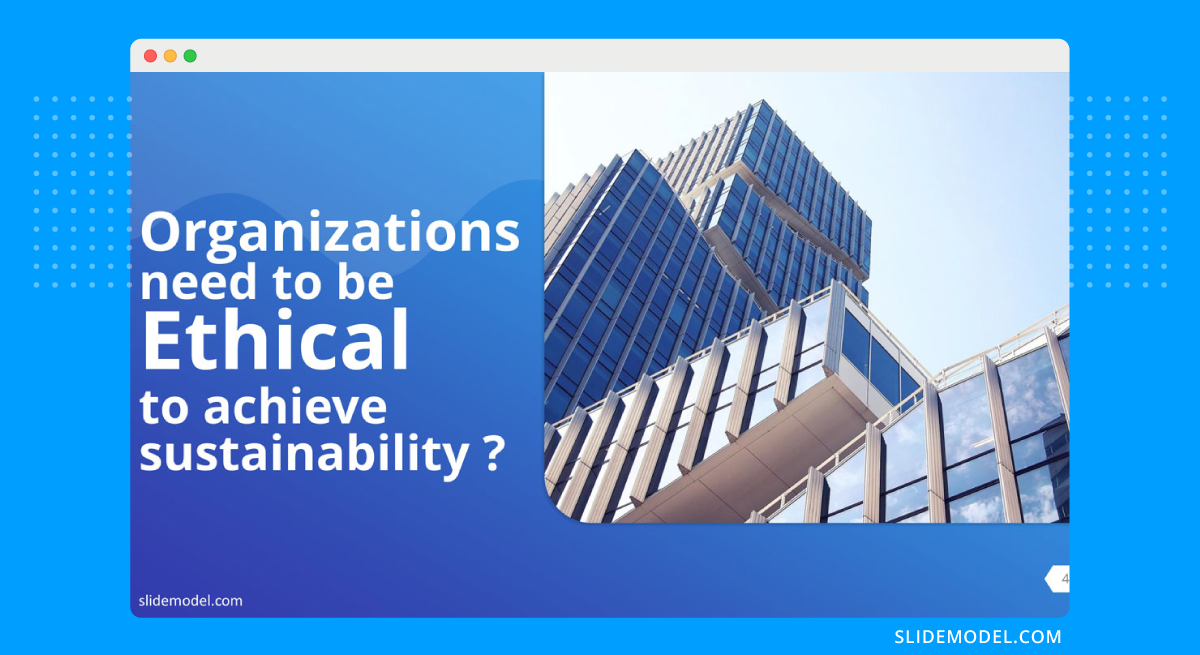
2. Disclose Your Methods
Whether you are doing a science poster presentation or conference talk, many audience members would be curious to understand how you arrived at your results. Deliver this information at the beginning of your presentation to avoid any ambiguities.
Here’s how to organize your science methods on a presentation:
- Do not use bullet points or full sentences. Use diagrams and structured images to list the methods
- Use visuals and iconography to use metaphors where possible.
- Organize your methods by groups e.g. quantifiable and non-quantifiable
Finally, when you work on visuals for your presentation — charts, graphs, illustrations, etc. — think from the perspective of a subject novice. Does the image really convey the key information around the subject? Does it help break down complex ideas?
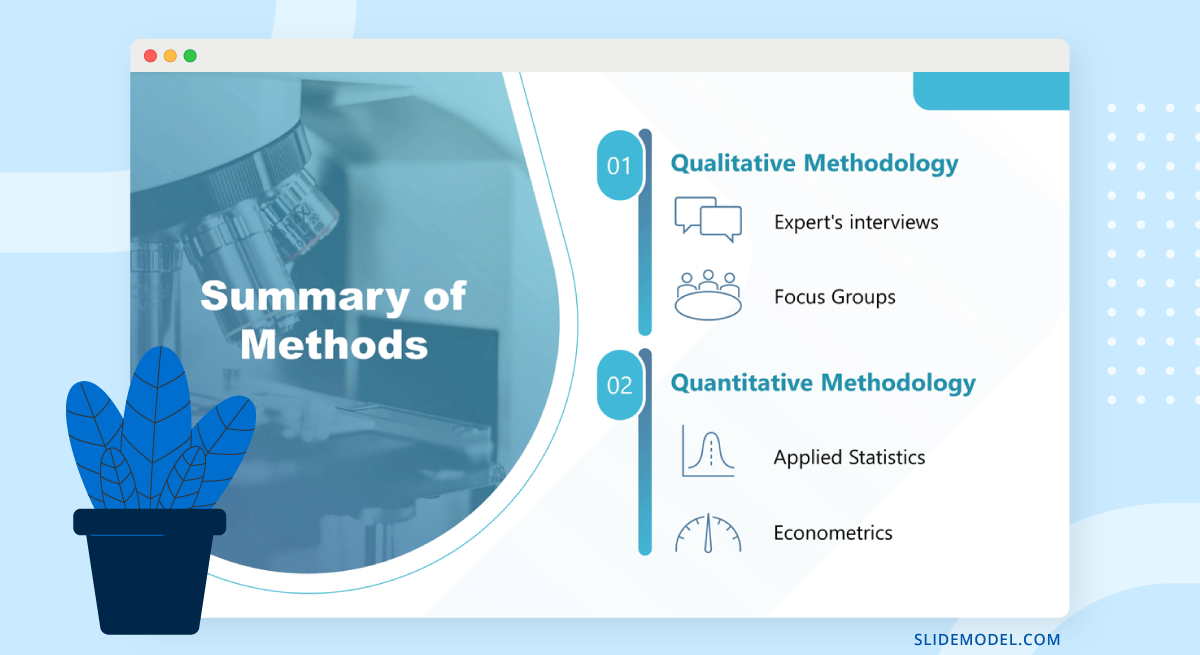
3. Spotlight the Results
Obviously, the research results will be your biggest bragging right. However, don’t over-pack your presentation with a long-winded discussion of your findings and how revolutionary these may be for the community.
Rather than writing a wall of text, do this instead:
- Use graphs with large axis values/numbers to showcase the findings in great detail
- Prioritize formats that are known to everybody (e.g. odds ratios, Kaplan Meier curves, etc.)
- Do not include more than 5 lines of plain text per slide
Overall, when you feel that the results slide gets too cramped, it’s best to move the data to a new one.
Also, as you work on organizing data on your scientific presentation PowerPoint template , think if there are obvious limitations and gaps. If yes, make sure you acknowledge them during your speech.
4. Mention Study Limitations
The scientific method mandates objectivity. That’s why every researcher must clearly state what was excluded from their study. Remember: no piece of scientific research is truly universal and has certain boundaries. However, when you fail to personally state those, others might struggle to draw the line themselves and replicate your results. Then, if they fail to do so, they’d question the viability of your research.
5. Conclude with a Memorable Takeaway Message
Every experienced speaker will tell you that the audience best retains the information they hear first and last. Most people will attend more than one scientific presentation during the day.
So if you want the audience to better remember your talk, brainstorm a take-home message for the last slide of your presentation. Think of your last slide texts as an elevator pitch — a short, concluding message, summarizing your research.
To Conclude
Today we have no shortage of research and scientific methods for testing and proving our hypothesis. However, unlike our ancestors, most scientists experience deeper scrutiny when it comes to presenting and explaining their findings to others. That’s why it’s important to ensure that your scientific presentation clearly relays the aim, vector, and thought process behind your research.
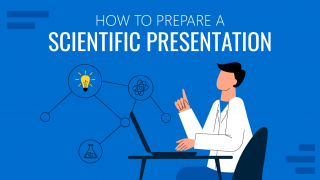
Like this article? Please share
Education, Presentation Ideas, Presentation Skills, Presentation Tips Filed under Education
Related Articles

Filed under Business • April 10th, 2024
Discovering Coaching Presentation Tools
Discover the best PPT templates to use as coaching presentation tools with this article. Tools explained + examples.

Filed under Google Slides Tutorials • March 22nd, 2024
How to Share a Google Slides Presentation
Optimize your presentation delivery as we explore how to share a Google Slides presentation. A must-read for traveling presenters.

Filed under Presentation Ideas • February 15th, 2024
How to Create a 5 Minutes Presentation
Master the art of short-format speeches like the 5 minutes presentation with this article. Insights on content structure, audience engagement and more.
Leave a Reply
Get in touch
555-555-5555

Limited time offer: 20% off all templates ➞

Scientific Presentation Guide: How to Create an Engaging Research Talk
Creating an effective scientific presentation requires developing clear talking points and slide designs that highlight your most important research results..
Scientific presentations are detailed talks that showcase a research project or analysis results. This comprehensive guide reviews everything you need to know to give an engaging presentation for scientific conferences, lab meetings, and PhD thesis talks. From creating your presentation outline to designing effective slides, the tips in this article will give you the tools you need to impress your scientific peers and superiors.

Step 1. Create a Presentation Outline
The first step to giving a good scientific talk is to create a presentation outline that engages the audience at the start of the talk, highlights only 3-5 main points of your research, and then ends with a clear take-home message. Creating an outline ensures that the overall talk storyline is clear and will save you time when you start to design your slides.
Engage Your Audience
The first part of your presentation outline should contain slide ideas that will gain your audience's attention. Below are a few recommendations for slides that engage your audience at the start of the talk:
- Create a slide that makes connects your data or presentation information to a shared purpose, such as relevance to solving a medical problem or fundamental question in your field of research
- Create slides that ask and invite questions
- Use humor or entertainment
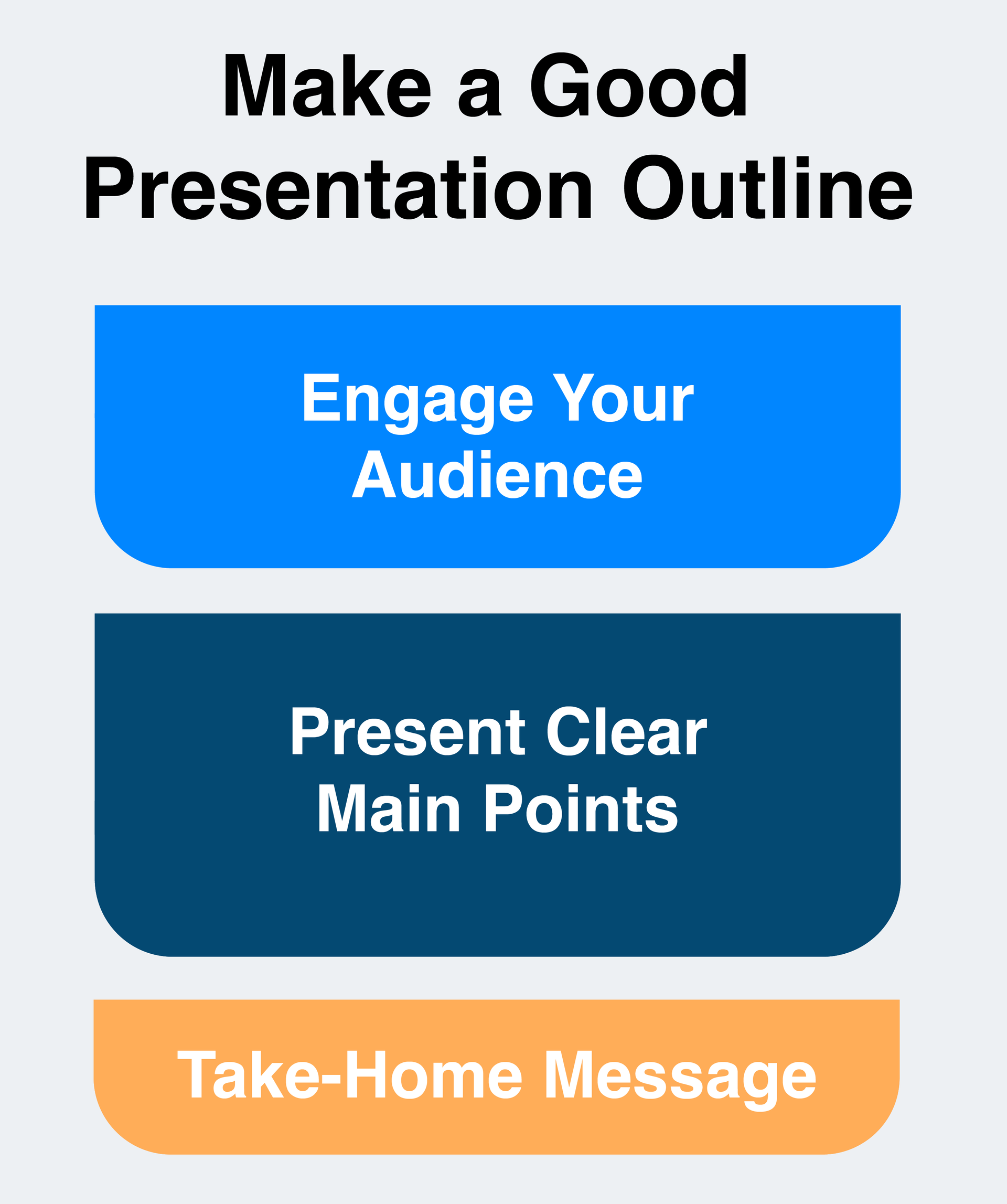
Identify Clear Main Points
After writing down your engagement ideas, the next step is to list the main points that will become the outline slide for your presentation. A great way to accomplish this is to set a timer for five minutes and write down all of the main points and results or your research that you want to discuss in the talk. When the time is up, review the points and select no more than three to five main points that create your talk outline. Limiting the amount of information you share goes a long way in maintaining audience engagement and understanding.

Create a Take-Home Message
And finally, you should brainstorm a single take-home message that makes the most important main point stand out. This is the one idea that you want people to remember or to take action on after your talk. This can be your core research discovery or the next steps that will move the project forward.
Step 2. Choose a Professional Slide Theme
After you have a good presentation outline, the next step is to choose your slide colors and create a theme. Good slide themes use between two to four main colors that are accessible to people with color vision deficiencies. Read this article to learn more about choosing the best scientific color palettes .
You can also choose templates that already have an accessible color scheme. However, be aware that many PowerPoint templates that are available online are too cheesy for a scientific audience. Below options to download professional scientific slide templates that are designed specifically for academic conferences, research talks, and graduate thesis defenses.
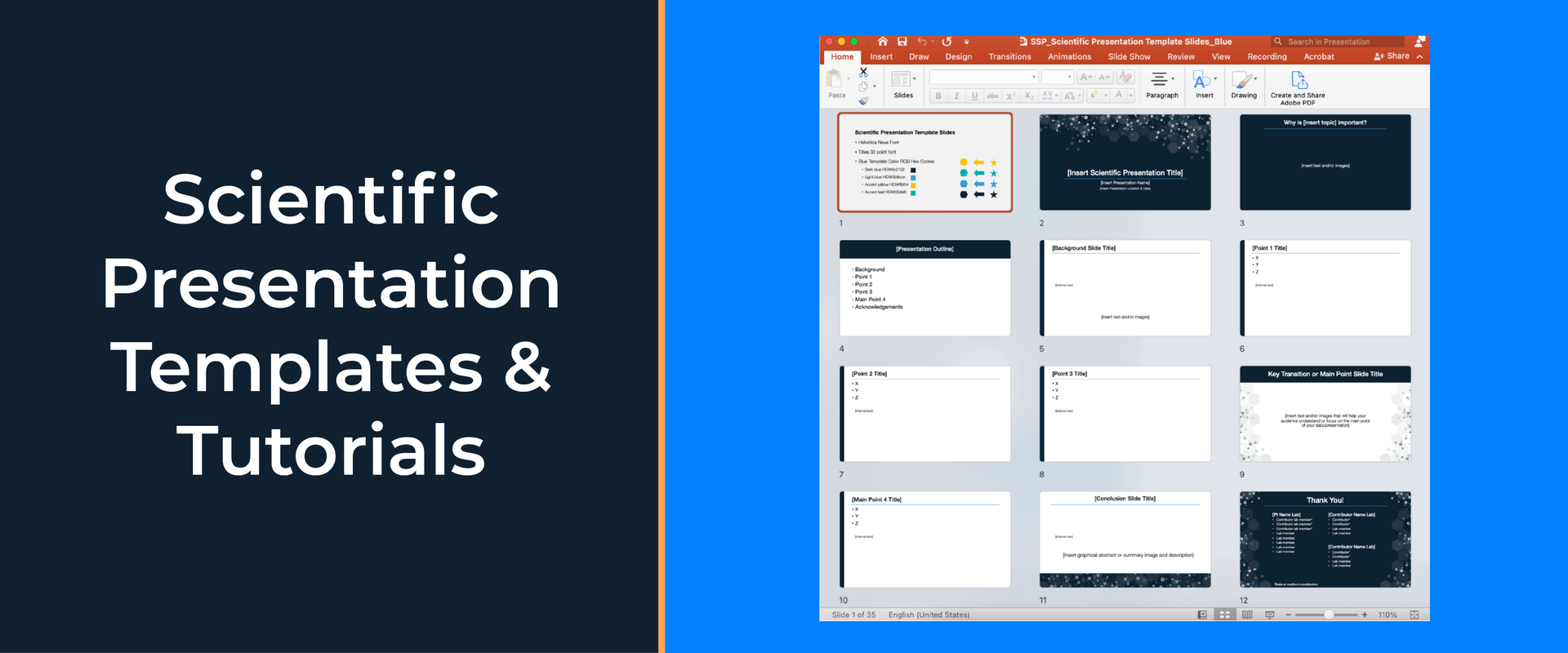
Step 3. Design Your Slides
Designing good slides is essential to maintaining audience interest during your scientific talk. Follow these four best practices for designing your slides:
- Keep it simple: limit the amount of information you show on each slide
- Use images and illustrations that clearly show the main points with very little text.
- Read this article to see research slide example designs for inspiration
- When you are using text, try to reduce the scientific jargon that is unnecessary. Text on research talk slides needs to be much more simple than the text used in scientific publications (see example below).
- Use appear/disappear animations to break up the details into smaller digestible bites
- Sign up for the free presentation design course to learn PowerPoint animation tricks
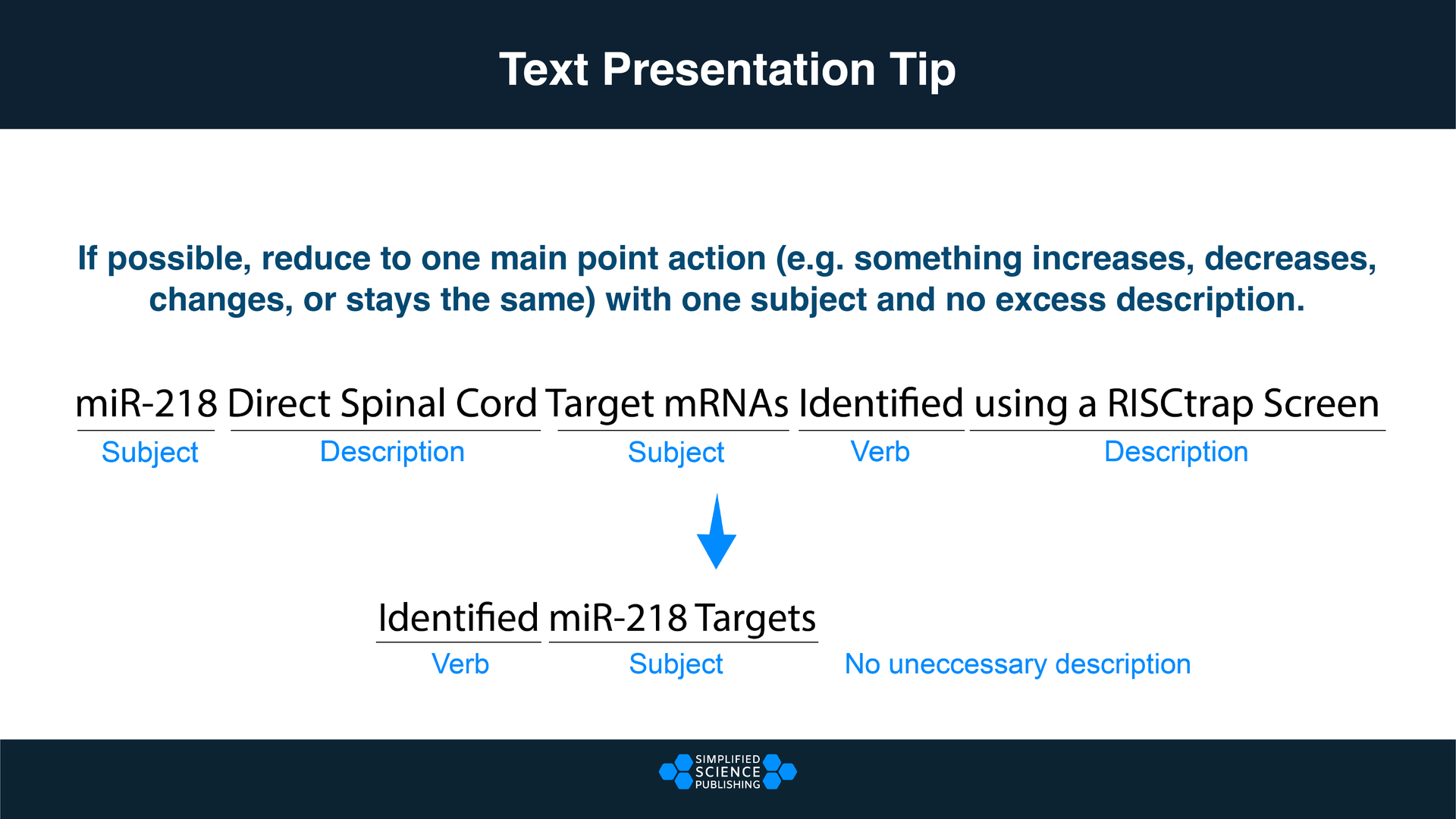
Scientific Presentation Design Summary
All of the examples and tips described in this article will help you create impressive scientific presentations. Below is the summary of how to give an engaging talk that will earn respect from your scientific community.
Step 1. Draft Presentation Outline. Create a presentation outline that clearly highlights the main point of your research. Make sure to start your talk outline with ideas to engage your audience and end your talk with a clear take-home message.
Step 2. Choose Slide Theme. Use a slide template or theme that looks professional, best represents your data, and matches your audience's expectations. Do not use slides that are too plain or too cheesy.
Step 3. Design Engaging Slides. Effective presentation slide designs use clear data visualizations and limits the amount of information that is added to each slide.
And a final tip is to practice your presentation so that you can refine your talking points. This way you will also know how long it will take you to cover the most essential information on your slides. Thank you for choosing Simplified Science Publishing as your science communication resource and good luck with your presentations!
Interested in free design templates and training?
Explore scientific illustration templates and courses by creating a Simplified Science Publishing Log In. Whether you are new to data visualization design or have some experience, these resources will improve your ability to use both basic and advanced design tools.
Interested in reading more articles on scientific design? Learn more below:

Data Storytelling Techniques: How to Tell a Great Data Story in 4 Steps

Best Science PowerPoint Templates and Slide Design Examples
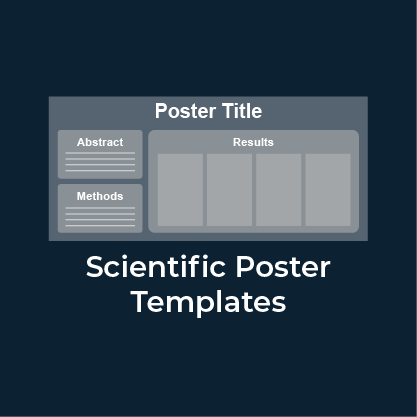
Free Research Poster Templates and Tutorials
Content is protected by Copyright license. Website visitors are welcome to share images and articles, however they must include the Simplified Science Publishing URL source link when shared. Thank you!
Online Courses
Stay up-to-date for new simplified science courses, subscribe to our newsletter.
Thank you for signing up!
You have been added to the emailing list and will only recieve updates when there are new courses or templates added to the website.
We use cookies on this site to enhance your user experience and we do not sell data. By using this website, you are giving your consent for us to set cookies: View Privacy Policy
Simplified Science Publishing, LLC
Reference management. Clean and simple.
5 tips for giving a good scientific presentation

What is a scientific presentation?
What is the objective of a scientific presentation, why is giving scientific presentations necessary, how to give a scientific presentation, tip 1: prepare during the days leading up to your talk, tip 2: deal with presentation nerves by practicing simple exercises, tip 3: deliver your talk with intention, tip 4: be adaptable and willing to adjust your presentation, tip 5: conclude your talk and manage questions confidently, concluding thoughts, other sources to help you give a good scientific presentation, frequently asked questions about giving scientific presentations, related articles.
You have made the slides for your scientific presentation. Now, you need to prepare to deliver your talk. But, giving an oral scientific presentation can be nerve-wracking. How do you ensure that you deliver your talk well, and leave a good impression on the audience?
Mastering the skill of giving a good scientific presentation will stand you in good stead for the rest of your career, as it may lead to new collaborations or even new employment opportunities.
In this guide, you’ll find everything you need to know to give a good oral scientific presentation, including
- Why giving scientific presentations is important for your career;
- How to prepare before giving a scientific presentation;
- How to keep the audience engaged and deliver your talk with confidence.
The following tips are a product of our research into the literature on giving scientific presentations as well as our own experiences as scientists in giving and attending talks. We advise on how to make a scientific presentation in another post.
A scientific presentation is a talk or poster where you describe the findings of your research to others. An oral presentation usually involves presenting slides to an audience. You may give an oral scientific presentation at a conference, give an invited seminar at another institution, or give a talk as part of an interview. A PhD thesis defense is one type of scientific presentation.
➡️ Read about how to prepare an excellent thesis defense
The objective of a scientific presentation is to communicate the science such that the audience:
- Learns something new;
- Leaves with a clear understanding of the key message of your research;
- Has confidence in you and your work;
- Remembers you afterward for the right reasons.

As a scientist, one of your responsibilities is disseminating your scientific knowledge by giving presentations. Communicating your research to others is an altruistic act, as it is an opportunity to teach others about your research findings, and the knowledge you have gained while researching your topic.
Giving scientific presentations confers many career benefits , such as:
- Having the opportunity to share your ideas and to have insightful conversations with other scientists. For example, a thoughtful question may create a new direction for your research.
- Gaining recognition for your work and generating excitement for your research program can help you to forge new collaborations and to obtain more citations of your papers. It's your chance to impress some of the biggest names in your field, build your reputation as a scientist, and get more people interested in your work.
- Improving your future employment prospects by getting presentation experience in high-stakes settings and by having talks listed on your academic CV.
➡️ Learn how to write an academic CV
You might have just 10 minutes for your talk. But those 10 minutes are your golden ticket. To make them shine, you'll need to put in some homework. You need to think about the story you want to tell , create engaging slides , and practice how you're going to deliver it.
Why all this effort? Because the rewards are potentially huge. Imagine speaking to the top names in your field, boosting your visibility, and getting more eyes on your work. It's more than just a talk; it's your chance to showcase who you are and what you do.
Here we share 5 tips for giving effective scientific presentations.
- Prepare adequately for your talk on the days leading up to it
- Deal with presentation nerves
- Deliver your talk with intention
- Be adaptable
- Conclude your talk with confidence
You should prepare for your talk with the seriousness it deserves and recognize the potential it holds for your career advancement. Here are our suggestions:
- Rehearse your talk multiple times to ensure smooth flow. Know the order of your slides and key transitions without memorizing every word. Practice your speech as though you are discussing with friendly and attentive listeners.
- Record your speech and listen back to yourself giving your talk while doing household chores or while going for a walk. This will help you remember the important points of your talk and feel more comfortable with the flow of it on the day.
- Anticipate potential questions that may arise during your talk, write down your responses to those questions, and practice them aloud.
- Back up your presentation in cloud storage and on a USB key. Bring your laptop with you on the day of your talk, if needed.
- Know the time and location of your talk. Familiarize yourself with the room, if you can. Introduce yourself to the moderator before the session begins.
- Giving a talk is a performance, so preparing yourself physically and mentally is essential. Prioritize good sleep and hydration, and eat healthy, nourishing food on the day of your talk. Plan your attire to be both professional and comfortable.
It’s natural to feel nervous before your talk, but you want to harness that energy to present your work with confidence. Here are some ways to manage your stress levels:
- Remember that your audience want to listen to you and learn from you. Believe that your audience will be kind, friendly, and interested, rather than bored and skeptical.
- Breathing slow and deep before your talk calms the mind and nervous system. Psychologist Amy Cuddy recommends practicing open, confident postures while sitting and standing to help you get into a positive frame of mind.
- Fight off impostor syndrome with positive affirmations. You’ve got this! Remember that you know more about your research than anyone else in the room and you are giving your talk to teach others about it.
Giving your talk with confidence is crucial for your credibility as a scientist. Focusing on your delivery helps ensure that your audience remembers and believes what you say. Here are some techniques to try:
- Before beginning, remember your professional goals and the benefits of giving your presentation. Start with a smile and exhale deeply.
- Memorize a simple opening. After the moderator introduces you, pause and take a breath. Welcome the audience, thank them for coming, and introduce yourself. You don’t need to read the title of your talk. But briefly, say something like, “today I’m going to talk to you about why [topic] is important and [what I hope you will learn from this talk]” in 1-2 sentences. Preparing your opening will settle your nerves and prevent you from starting your talk on a tangential topic, ensuring you stay on time.
- Project confidence outwardly, even if you feel nervous. Stand up tall with your shoulders back and make eye contact with individuals in the audience. Move your focus around the room, so everyone in the audience feels included.
- Maintain open body language and face the audience as much as possible, not your slides.
- Project your voice as much as you can so that people at the back of the room can hear you. Enunciate your words, avoid mumbling, and don’t trail off awkwardly.
- Varying your vocal delivery and intonation will make your talk more interesting and help the audience pay attention, particularly when you want to emphasize key points or transitions.
- Pausing for dramatic effect at crucial moments can help you relax and remember your message, as well as being an effective engagement device.
- A laser pointer can be off-putting for the audience if you are prone to having a shaky hand when nervous. Use a laser pointer only to emphasize information on the slide while providing an explanation. If you design your slides thoughtfully , you won’t need to use a laser pointer.
Not all parts of your talk may go according to plan. Here are some ways to adapt to hitches during your talk:
- Handle talk disruptions gracefully. If you make a mistake, or a technical issue occurs during your talk, remember that it’s okay to skip something and move on without apologizing.
- If you forget to mention something but the audience hasn’t noticed, don’t point it out! They don’t need to know.
- As you give your talk, be time-conscious, and watch the moderator for signals that the time is about to expire. If you realize you won’t have time to discuss all your slides, skip the less important ones. Adjust your presentation on the fly to finish on time, prioritizing content as needed.
- If you run out of time completely, just stop. You don’t have to give a conclusion, but you do need to stop on time! Practicing your talk should prevent this situation.
The ending of your talk is important for emphasizing your key message and ensuring the audience leave with a positive impression of you and your work. Here are some pointers.
- Conclude your talk with a memorized closing statement that summarizes the key take-home message of your research. After making your closing statement, end your talk with a simple “Thank you”. Then pause and wait for the applause. You don’t need to ask if the audience has questions because the moderator will call for questions on your behalf.
- When you receive a question, pause, then repeat the question. This ensures the whole audience understands the question and gives you time to calmly consider your answer.
- In a talk on attaining confidence in your scientific presentations, Michael Alley suggests that if you don’t know the answer to the question, then emphasize what you do know. Say something like, “Although I can’t fully answer your question, I can say [this about the topic].”
- Approach the Q&A with interest rather than anxiety by reframing it as an opportunity to further share your knowledge. Being curious, instead of feeling fearful, can help you shine during what might be the most stressful part of your presentation.
Communicating your research effectively is a key skill for early career scientists to learn. Taking ample time to prepare and practice your presentation is an investment in your scientific development.
But here's the good part: all that effort pays off. Think of your talk as not just a presentation, but as a way to show off what you and your research are all about. Giving a compelling scientific presentation will raise your professional profile as a scientist, lead to more citations of your work, and may even help you obtain a future academic job.
But most importantly of all, giving talks contributes to science, and sharing your knowledge is an act of generosity to the scientific community.
➡️ Questions to ask yourself before you make your talk
➡️ How to give a great scientific talk
1) Have a positive mindset. To help with nerves, breathe deeply and keep in mind that you are an authority on your topic. 2) Be prepared. Have a short list of points for each slide and know the key transition points of your talk. Practice your talk to ensure it flows smoothly. 3) Be well-rested before your talk and eat a light meal on the day of your presentation. A talk is a performance. 4) Project your voice and vary your vocal intonation and pitch to retain the interest of the audience. Take pauses at key moments, for emphasis. 5) Anticipate questions that audience members could ask, and prepare answers for them.
The goal of a scientific presentation is that the audience remembers the key outcomes of your research and that they leave with a good impression of you and your science.
Take a moment to exhale deeply and collect your thoughts after the moderator has introduced you. Don’t read your talk's title. Instead, introduce yourself, thank the audience for attending, and provide a warm welcome. Then say something along the lines of, "Today I'm going to talk to you about why [topic] is important and [what I hope you will learn from this presentation].” A rehearsed opening will ensure that you start your talk on a confident note.
Prepare a memorable closing statement that emphasizes the key message of your talk. Then end with a simple “Thank you”.
Preparation is key. Practice many times to familiarize yourself with the content of your presentation. Before giving your talk, breathe slowly and deeply, and remind yourself that you are the expert on your topic. When giving your talk, stand up tall and use open body language. Remember to project your voice, and make eye contact with members of the audience.

- - Google Chrome
Intended for healthcare professionals
- Access provided by Google Indexer
- My email alerts
- BMA member login
- Username * Password * Forgot your log in details? Need to activate BMA Member Log In Log in via OpenAthens Log in via your institution

Search form
- Advanced search
- Search responses
- Search blogs
- How to prepare and...
How to prepare and deliver an effective oral presentation
- Related content
- Peer review
- Lucia Hartigan , registrar 1 ,
- Fionnuala Mone , fellow in maternal fetal medicine 1 ,
- Mary Higgins , consultant obstetrician 2
- 1 National Maternity Hospital, Dublin, Ireland
- 2 National Maternity Hospital, Dublin; Obstetrics and Gynaecology, Medicine and Medical Sciences, University College Dublin
- luciahartigan{at}hotmail.com
The success of an oral presentation lies in the speaker’s ability to transmit information to the audience. Lucia Hartigan and colleagues describe what they have learnt about delivering an effective scientific oral presentation from their own experiences, and their mistakes
The objective of an oral presentation is to portray large amounts of often complex information in a clear, bite sized fashion. Although some of the success lies in the content, the rest lies in the speaker’s skills in transmitting the information to the audience. 1
Preparation
It is important to be as well prepared as possible. Look at the venue in person, and find out the time allowed for your presentation and for questions, and the size of the audience and their backgrounds, which will allow the presentation to be pitched at the appropriate level.
See what the ambience and temperature are like and check that the format of your presentation is compatible with the available computer. This is particularly important when embedding videos. Before you begin, look at the video on stand-by and make sure the lights are dimmed and the speakers are functioning.
For visual aids, Microsoft PowerPoint or Apple Mac Keynote programmes are usual, although Prezi is increasing in popularity. Save the presentation on a USB stick, with email or cloud storage backup to avoid last minute disasters.
When preparing the presentation, start with an opening slide containing the title of the study, your name, and the date. Begin by addressing and thanking the audience and the organisation that has invited you to speak. Typically, the format includes background, study aims, methodology, results, strengths and weaknesses of the study, and conclusions.
If the study takes a lecturing format, consider including “any questions?” on a slide before you conclude, which will allow the audience to remember the take home messages. Ideally, the audience should remember three of the main points from the presentation. 2
Have a maximum of four short points per slide. If you can display something as a diagram, video, or a graph, use this instead of text and talk around it.
Animation is available in both Microsoft PowerPoint and the Apple Mac Keynote programme, and its use in presentations has been demonstrated to assist in the retention and recall of facts. 3 Do not overuse it, though, as it could make you appear unprofessional. If you show a video or diagram don’t just sit back—use a laser pointer to explain what is happening.
Rehearse your presentation in front of at least one person. Request feedback and amend accordingly. If possible, practise in the venue itself so things will not be unfamiliar on the day. If you appear comfortable, the audience will feel comfortable. Ask colleagues and seniors what questions they would ask and prepare responses to these questions.
It is important to dress appropriately, stand up straight, and project your voice towards the back of the room. Practise using a microphone, or any other presentation aids, in advance. If you don’t have your own presenting style, think of the style of inspirational scientific speakers you have seen and imitate it.
Try to present slides at the rate of around one slide a minute. If you talk too much, you will lose your audience’s attention. The slides or videos should be an adjunct to your presentation, so do not hide behind them, and be proud of the work you are presenting. You should avoid reading the wording on the slides, but instead talk around the content on them.
Maintain eye contact with the audience and remember to smile and pause after each comment, giving your nerves time to settle. Speak slowly and concisely, highlighting key points.
Do not assume that the audience is completely familiar with the topic you are passionate about, but don’t patronise them either. Use every presentation as an opportunity to teach, even your seniors. The information you are presenting may be new to them, but it is always important to know your audience’s background. You can then ensure you do not patronise world experts.
To maintain the audience’s attention, vary the tone and inflection of your voice. If appropriate, use humour, though you should run any comments or jokes past others beforehand and make sure they are culturally appropriate. Check every now and again that the audience is following and offer them the opportunity to ask questions.
Finishing up is the most important part, as this is when you send your take home message with the audience. Slow down, even though time is important at this stage. Conclude with the three key points from the study and leave the slide up for a further few seconds. Do not ramble on. Give the audience a chance to digest the presentation. Conclude by acknowledging those who assisted you in the study, and thank the audience and organisation. If you are presenting in North America, it is usual practice to conclude with an image of the team. If you wish to show references, insert a text box on the appropriate slide with the primary author, year, and paper, although this is not always required.
Answering questions can often feel like the most daunting part, but don’t look upon this as negative. Assume that the audience has listened and is interested in your research. Listen carefully, and if you are unsure about what someone is saying, ask for the question to be rephrased. Thank the audience member for asking the question and keep responses brief and concise. If you are unsure of the answer you can say that the questioner has raised an interesting point that you will have to investigate further. Have someone in the audience who will write down the questions for you, and remember that this is effectively free peer review.
Be proud of your achievements and try to do justice to the work that you and the rest of your group have done. You deserve to be up on that stage, so show off what you have achieved.
Competing interests: We have read and understood the BMJ Group policy on declaration of interests and declare the following interests: None.
- ↵ Rovira A, Auger C, Naidich TP. How to prepare an oral presentation and a conference. Radiologica 2013 ; 55 (suppl 1): 2 -7S. OpenUrl
- ↵ Bourne PE. Ten simple rules for making good oral presentations. PLos Comput Biol 2007 ; 3 : e77 . OpenUrl PubMed
- ↵ Naqvi SH, Mobasher F, Afzal MA, Umair M, Kohli AN, Bukhari MH. Effectiveness of teaching methods in a medical institute: perceptions of medical students to teaching aids. J Pak Med Assoc 2013 ; 63 : 859 -64. OpenUrl
- Enterprise Custom Courses
- Build Your Own Courses
- Help Center
- Clinical Trial Recruitment
- Pharmaceutical Marketing
- Health Department Resources
- Patient Education
- Research Presentation
- Remote Monitoring
- Health Literacy & SciComm
- Student Education & Higher Ed
- Individual Learning
- Member Directory
- Community Chats on Slack
- SciComm Program
- The Story-Driven Method
- The Instructional Method
How to Create an Engaging Science Presentation: A Quick Guide
We’ve all been there – rushing to put slides together for an upcoming talk, filling them with bullet points and text that we want to remember to cover. We aren’t sure exactly what the audience will want to know or how much detail to include, so we default to putting ALL the details in that might be needed. But such efforts often result in presentations that are too long, too confusing, and difficult for both ourselves and our audiences to navigate.
Today I gave a workshop to public health graduate students about how to create more engaging science presentations and talks. I’ve summarized the main takeaways below. I hope this quick guide will be useful to you as you prepare for your next science talk or presentation!
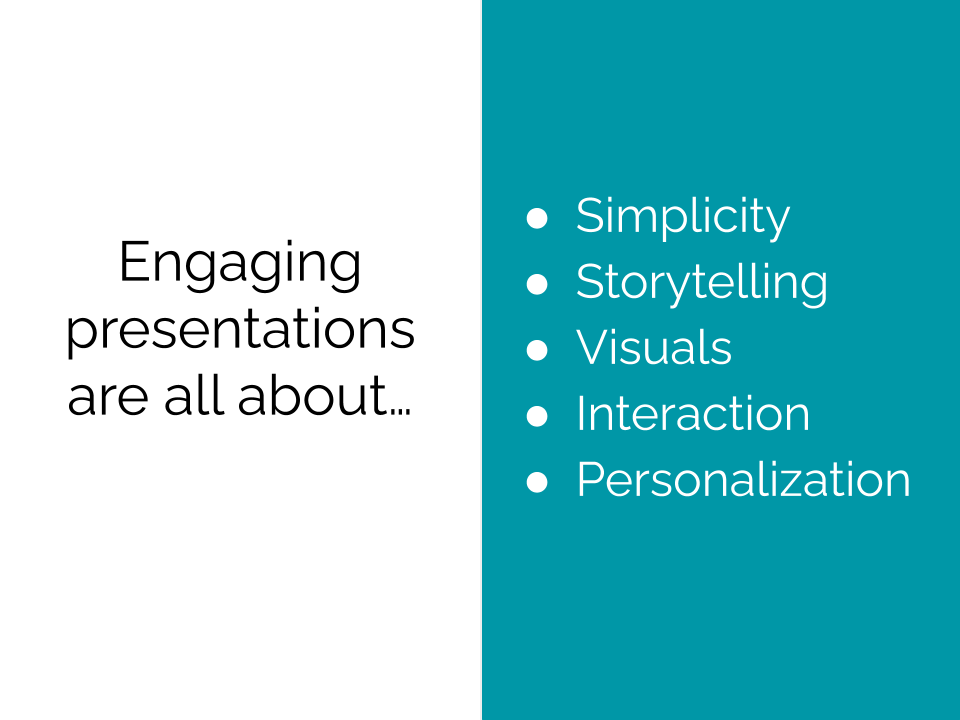
The best science talks start with a process of simplifying – peeling back the layers of information and detail to get at the one core idea that you want to communicate. Over the course of your talk, you may present 2-3 key messages that relate to, demonstrate, provide examples of or underpin this idea. (Three is a nice round number of messages or takeaways that your audience will be able to remember!) But stick to one big idea. Trying to communicate too much in a presentation or talk will overwhelm your audience, and they may walk away without a good memory of any of the ideas you presented.
Once you’ve settled on your one big idea, you can develop a theme that will pervade every aspect of your talk. This theme might be a defining element of your big idea and something that can tie all of your data or talking points together. Your theme should inform the examples, anecdotes and analogies that you use to make the science concepts you present more accessible. It should also inform your slides’ very design – the colors, visuals, layout and content flow.
If you have trouble identifying your big idea and your theme, you can try using what scientist and science author Randy Olson calls the “Dobzhansky Template.” Fill in the blanks of this statement: “ Nothing in [your talk topic, research topic or big idea] makes sense, except in the light of [your theme!] .”
Here’s an example for you: “Nothing in the creation of engaging science talks makes sense except in the light of people’s need for personal connection .” With this statement, I’m identifying a key aspect, a unifying theme, for my talk (or blog post) on how to create engaging science talks. We all crave personal connection. Yes, even to the speakers of science talks we listen to! What does this mean in terms of what we want or expect from these speakers? It means we want storytelling . We want to hear their stories, know their background, hear about their struggles and triumphs! We want to be able to step into their shoes and see what they saw. We want to interact with them.
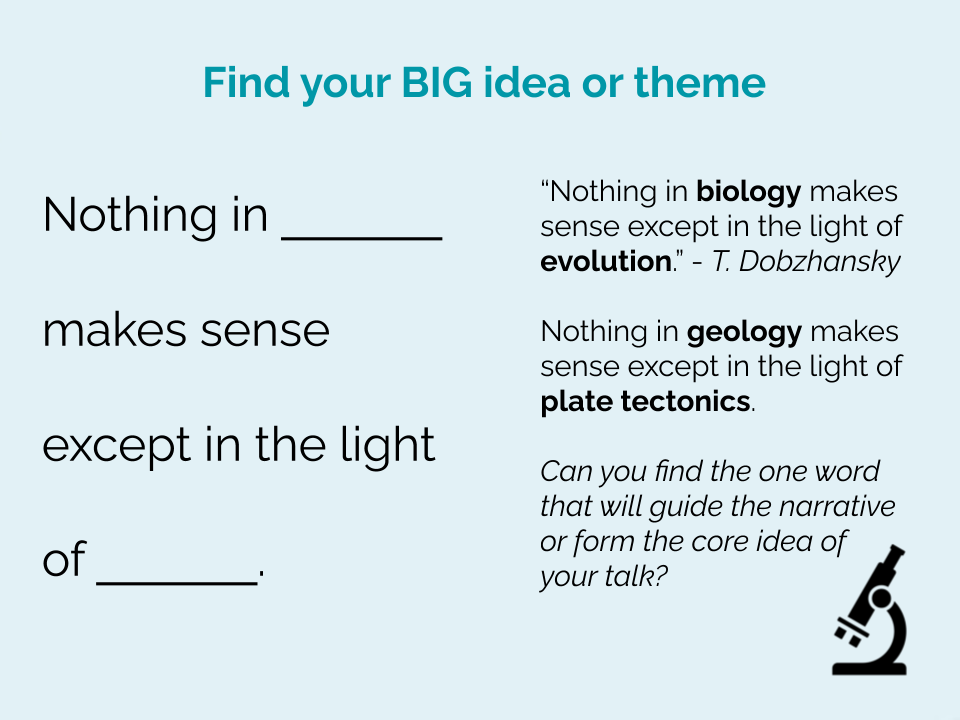
Tell a Story
Narratives engage more than facts. By telling a story , using suspense and characters to pull people through your presentation, you will capture and keep their attention for longer. People also remember information presented in a story format better than they do information presented as disparate facts or bullet points.
“Story is a pull strategy. If your story is good enough, people—of their own free will—come to the conclusion they can trust you and the message you bring.” – Annette Simmons
Storytelling is a powerful science communication tool. In storytelling, both the storyteller and the listener or reader contribute to the story’s meaning through their interpretations, feelings and emotions. Liz Neeley, former executive director of The Story Collider, once said: “Science communicators frequently fail to understand that a feeling is almost never conquered with a fact.”
Stories are exciting. They elicit emotions. They help foster a personal connection between the storyteller and the listener, and a connection between the listener and the topic, characters or ideas presented in the story.
But what IS a story? As humans, we excel at recognizing a story when we hear one, but defining a story’s key characteristics is more difficult than you might think. If you ask anyone to explain what makes for a good story, they likely will have a hard time explaining it.
In her fantastic book Wired for Story , Lisa Cron starts by explaining what a story is NOT.
It is not plot – that is just what happens in the story.
It is not characters , although characters are critical components of storytelling, even if they are not human or even alive. Cells and molecules could be the characters of your next science talk!
It is not suspense or conflict , although these elements get us closer to what defines a good story. But just because your talk builds suspense does not necessarily make it an engaging story. What if we don’t identify with your characters?
The truth is that the key defining element of story is internal change . Think of how every Aesop’s fable communicates a moral or lesson that the main character learned from some journey. As Lisa Cron writes, “A story is how what happens affects someone who is trying to achieve what turns out to be a difficult goal, and how he or she changes as a result.” The key here is the part about “how he or she changes.” A great story calls characters to a great adventure, but the adventure doesn’t leave them just as they were before. The adventure – like a scientific discovery that took years of experimentation (and failure) in the lab – leads to an internal change, in perspective or knowledge or behavior, as a result of conflicts overcome.
This is the secret of storytelling. A story asks characters to change and grow, and so the scientists in our stories must change and grow, discover new things about themselves and overcome challenges that force them to adopt new perspectives. So if you are giving a science talk about your own research, this might look like telling stories about your own struggles, growths and changes in perspective as you made your journey to discovery!
How can you bring a story of internal change to your next science presentation or talk?
What is one of the most common mistakes people make when creating slides to accompany a science talk? They use WAY too much text, and they use visuals as an afterthought. Worse yet, they use visuals that are copyrighted without attribution. They use stock imagery that reinforces stereotypes. They use visuals pasted from a Google search that don’t help the viewer understand or interpret what is said or written on the slides.
Visuals can be a powerful tool to advance audience learning or engagement during your science talks. You can use visuals to provide concrete examples of concepts you are talking about. You can use imagery that sparks thought or emotion. You can use visuals that reinforce your BIG idea or the theme of your talk, in a way that will make your talk more memorable for them. Yes, you might need to use a scientific figure, graph, chart or data visualization here and there if you are giving a more technical scientific talk, and that’s ok as long as you also talk the audience through this visual. Don’t assume they can listen to you talk about something different while also taking the time to interpret the message in this graphic or visualization – they can’t.
The same goes for text. You are demanding way too much brainpower of your audience to expect them to listen to you while also reading your slides. And if you are saying the same things as are written on your slides, they will grow bored. Simple visual aids used the right way, however, can delight your audience and help them better understand what you are saying.
Consider working with a professional artist or designer to create visuals for the slides of your next science talk! They excel at creating visuals that capture people’s attention, curiosity and emotions. And if you do this, your visuals will perfectly match what you are trying to communicate in words, boosting learning and understanding.
Foster Interaction
A good science talk or presentation gives the audience opportunities to interact with you! This could be through questions, activities, discussions or thought experiments. Let the audience explore your data or interpretations with you. They will be more engaged and likely trust you more as a result, because they felt heard .
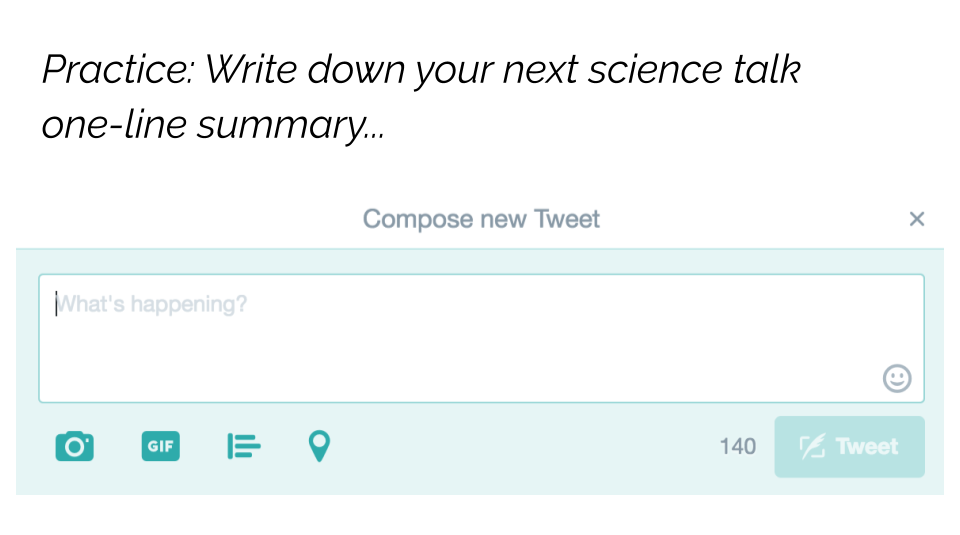
Personalize!
Most great science speakers make themselves vulnerable in a way – they tell personal stories of struggles, growth and discovery. Personal stories are engaging. They also help the audience care about what the speaker has to say.
It can be scary to talk about yourself, especially for a scientist who has been trained to focus solely on the data. But the humans listening to your talk or presentation crave human connection. They will also grab hold of anything that helps them better relate to you. Give them that in the form of personal stories of obstacles overcome, of personal lessons learned, of work-life balance, of your fears and passions. Better yet, tell personal stories that reinforce your theme and show the power of your big idea!
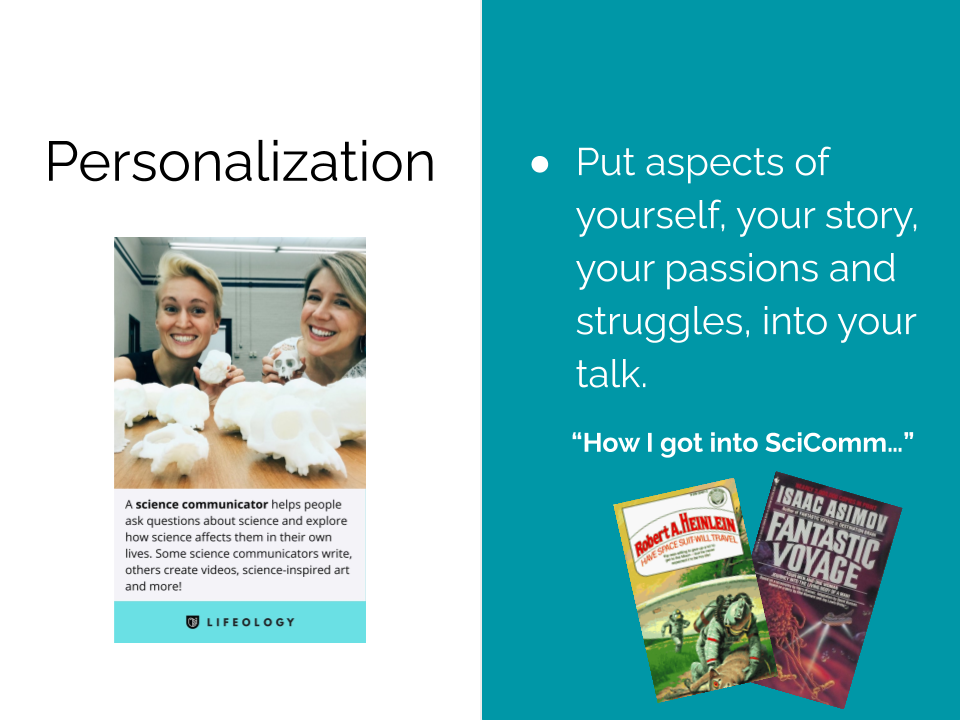
Do you have other strategies for how you make your science talks and presentations more engaging? Let me know in the comments below!
Share This Story, Choose Your Platform!
About the author: paige jarreau.

Related Posts

Una actividad práctica para ayudarte a comunicar la ciencia de forma culturalmente relevante

The Power of SciComm in Combatting Mental Health Stigma
Make your scicomm more culturally relevant: a practice activity.

Communicating About Postpartum Depression

Science Communication and Genetic Counselling

Creating Analogies: Elevate Your Science with a Lifeology Course

Princeton Correspondents on Undergraduate Research
How to Make a Successful Research Presentation
Turning a research paper into a visual presentation is difficult; there are pitfalls, and navigating the path to a brief, informative presentation takes time and practice. As a TA for GEO/WRI 201: Methods in Data Analysis & Scientific Writing this past fall, I saw how this process works from an instructor’s standpoint. I’ve presented my own research before, but helping others present theirs taught me a bit more about the process. Here are some tips I learned that may help you with your next research presentation:
More is more
In general, your presentation will always benefit from more practice, more feedback, and more revision. By practicing in front of friends, you can get comfortable with presenting your work while receiving feedback. It is hard to know how to revise your presentation if you never practice. If you are presenting to a general audience, getting feedback from someone outside of your discipline is crucial. Terms and ideas that seem intuitive to you may be completely foreign to someone else, and your well-crafted presentation could fall flat.
Less is more
Limit the scope of your presentation, the number of slides, and the text on each slide. In my experience, text works well for organizing slides, orienting the audience to key terms, and annotating important figures–not for explaining complex ideas. Having fewer slides is usually better as well. In general, about one slide per minute of presentation is an appropriate budget. Too many slides is usually a sign that your topic is too broad.

Limit the scope of your presentation
Don’t present your paper. Presentations are usually around 10 min long. You will not have time to explain all of the research you did in a semester (or a year!) in such a short span of time. Instead, focus on the highlight(s). Identify a single compelling research question which your work addressed, and craft a succinct but complete narrative around it.
You will not have time to explain all of the research you did. Instead, focus on the highlights. Identify a single compelling research question which your work addressed, and craft a succinct but complete narrative around it.
Craft a compelling research narrative
After identifying the focused research question, walk your audience through your research as if it were a story. Presentations with strong narrative arcs are clear, captivating, and compelling.
- Introduction (exposition — rising action)
Orient the audience and draw them in by demonstrating the relevance and importance of your research story with strong global motive. Provide them with the necessary vocabulary and background knowledge to understand the plot of your story. Introduce the key studies (characters) relevant in your story and build tension and conflict with scholarly and data motive. By the end of your introduction, your audience should clearly understand your research question and be dying to know how you resolve the tension built through motive.

- Methods (rising action)
The methods section should transition smoothly and logically from the introduction. Beware of presenting your methods in a boring, arc-killing, ‘this is what I did.’ Focus on the details that set your story apart from the stories other people have already told. Keep the audience interested by clearly motivating your decisions based on your original research question or the tension built in your introduction.
- Results (climax)
Less is usually more here. Only present results which are clearly related to the focused research question you are presenting. Make sure you explain the results clearly so that your audience understands what your research found. This is the peak of tension in your narrative arc, so don’t undercut it by quickly clicking through to your discussion.
- Discussion (falling action)
By now your audience should be dying for a satisfying resolution. Here is where you contextualize your results and begin resolving the tension between past research. Be thorough. If you have too many conflicts left unresolved, or you don’t have enough time to present all of the resolutions, you probably need to further narrow the scope of your presentation.
- Conclusion (denouement)
Return back to your initial research question and motive, resolving any final conflicts and tying up loose ends. Leave the audience with a clear resolution of your focus research question, and use unresolved tension to set up potential sequels (i.e. further research).
Use your medium to enhance the narrative
Visual presentations should be dominated by clear, intentional graphics. Subtle animation in key moments (usually during the results or discussion) can add drama to the narrative arc and make conflict resolutions more satisfying. You are narrating a story written in images, videos, cartoons, and graphs. While your paper is mostly text, with graphics to highlight crucial points, your slides should be the opposite. Adapting to the new medium may require you to create or acquire far more graphics than you included in your paper, but it is necessary to create an engaging presentation.
The most important thing you can do for your presentation is to practice and revise. Bother your friends, your roommates, TAs–anybody who will sit down and listen to your work. Beyond that, think about presentations you have found compelling and try to incorporate some of those elements into your own. Remember you want your work to be comprehensible; you aren’t creating experts in 10 minutes. Above all, try to stay passionate about what you did and why. You put the time in, so show your audience that it’s worth it.
For more insight into research presentations, check out these past PCUR posts written by Emma and Ellie .
— Alec Getraer, Natural Sciences Correspondent
Share this:
- Share on Tumblr

A Nature Research Service

- On-demand Courses
- Share & disseminate
Advancing your Scientific Presentations
For researchers in the natural sciences who want to improve the quality of their peer-to-peer scientific presentations with both virtual and face-to-face audiences
10 experts who excel at presenting their work, including renowned presentation designers, and trainers and experts in narrative tools
10 hours of learning
15-minute lessons
4-module course with course certificate
About this course
'Advancing Your Scientific Presentations' teaches you how to create more memorable and engaging presentations to your scientific peers. In the course, you will discover how you can develop your research story - the foundation of your presentation - using narrative tools, how to build a slide deck that supports and enhances your presentation, and how to prepare to deliver your presentation on the day.
What you'll learn
- To identify techniques that can help to overcome the challenges that researchers commonly face when creating and delivering oral presentations
- To build compelling research stories to use as the foundation for your presentations
- To create professional slide decks that effectively communicate your research findings to your audience
- To apply strategies to help you deliver your presentation effectively on the day, in both virtual and face-to-face environments
Free Sample Overcoming your research presentation challenges
5 lessons 2h
Free Sample Developing the story behind your talk
7 lessons 2h 30m
Free Sample Building an engaging slide deck
Free sample preparing and navigating your talk.
7 lessons 3h
Free Sample Advancing Your Scientific Presentations: Free Sample - section
No subscription yet? Try this free sample to preview lessons from the course
4 lessons 1h
Start this module
Developed with expert academics and professionals
This course benefits from the insights of experts with a wide range of experience, including:
- Delivering compelling presentations to audiences of scientific peers
- Using narrative techniques when communicating research
- Designing slide decks to support and enhance presentations
- Training researchers how to deliver scientific presentations in a clear and engaging manner
Meet the expert panel that have helped shape and refine the content of the course:
Michael Alley
Teaching Professor of Engineering Communications, Penn State
Shohini Ghose
Professor of Physics and Computer Science, Wilfrid Laurier University
Nolan Haims
Principal, Nolan Haims Creative
Magdalena Skipper
Editor in Chief, Nature and Chief Editorial Advisor, Nature Portfolio
Michael White
Senior Editor, Nature
Advice from experienced researchers
The course has additional insights through video interviews from:
Beatrice Chiew
Postdoctoral Researcher, University of Newcastle, Australia
Jean-luc Doumont
Founding Partner, Principiae
Michael Dahlstrom
LAS Dean's Professor and Director, Greenlee School of Journalism, Iowa State University
Richard Goring
Director, Bright Carbon
Samuel Ramsey
Entomologist, USDA-ARS Bee Research Laboratory
Feedback from course users
I was reluctant to see my research results as a "story" to be told to others. But now I understand it's what makes my results stick. Postdoctoral student, United States
I found it really helpful to have a clear process that I could apply to develop my talk, from the core message to the design details of the slides. Research scientist, India
Discover related courses
Networking for researchers.
Create and nurture professional relationships for mutual benefit
Narrative Tools for Researchers
Examine the best ways you can share your research story persuasively with your peers
Access options
For researchers.
- Register and complete our free course offering , or try a free sample of any of our paid-for courses
- Recommend our courses to your institution, so that we can contact them to discuss becoming a subscriber
For institutions, departments and labs
Find out which of our subscription plans best suits your needs See our subscription plans
Does my institution provide full course access?
When registering, you’ll be asked to select your institution first. If your institution is listed, it has subscribed and provides full access to our on-demand courses catalogue.
My institution isn’t listed!
Select „other“ and register with an individual account. This allows you to access all our free sample course modules, and our entirely free course on peer review. You might also want to recommend our courses to your institution.
I am in charge of purchasing training materials for our lab / department / institution. Buy a subscription
Start this course
Full course access via institutional subscription only. More info
Institutions, departments and labs: Give your research full access to our entire course catalogue
Image Credits
- Google Slides Presentation Design
- Pitch Deck Design
- Powerpoint Redesign
- Other Design Services

- Design Tips
- Guide & How to's
How to prepare a scientific presentation
Putting together a scientific presentation might be a pretty challenging undertaking. However, with careful preparation and planning, it can turn into a rewarding experience.
In this article, we’ll discuss the purpose, presentation methods, and structure of an excellent scientific ppt, as well as share essential tips on how to introduce a scientific presentation, so dive in!

What’s a scientific presentation
A scientific presentation is a formal way to share an observation, propose a hypothesis, show and explain the findings of a study, or summarize what has been discovered or is still to be studied on the subject.
Professional scientific presentations aid in disseminating research and raise peers’ awareness of novel approaches, findings, or issues. They make conferences memorable for both the audience and the presenter.

Presentation methods
The three major presentation methods that are frequently used at large conferences include platform (oral), poster, and lecture presentations. Although appearing seemingly different at times, they all have the same requirements and difficulties for successful execution, and their main prerequisite is you, the presenter.
An effective presenter should have led the research, taken part in the analysis, and written the abstract and manuscript, which means the presenter should be fully knowledgeable about the topic at hand.
Scientific presentation structure
For the majority of scientific presentations, it is advisable to follow the traditional structure:
Title → Introduction/Background → Methods → Results → Discussion → Conclusion → Acknowledgements.
1. Introduction
The main elements that make up the introduction include the background of the study, the research problem, the significance of the research, the research objectives, research questions, and/or hypotheses.
The background is the premise upon which the study’s problem is built. It usually consists of one or two sentences.
After the background usually comes the research problem, which is made up of one or two sentences with clear statements. These can be anything from conflicting findings to a knowledge gap your scientific presentation PowerPoint addresses.
The justification part should briefly outline how the findings will contribute to the problem’s solution. It can also discuss the possible implications of the study in not more than two sentences.
Next comes the purpose of the study, which has to outline your goals and relate to the study’s title.
You may wrap up the introduction by listing the objectives of your study, research questions, or hypotheses. The study’s objectives describe the specific steps that must be taken to accomplish the goal. Please note that the objective can be turned into a research question and a research question, in turn, into a hypothesis.
2. Methodology
This section of your presentation should include a relevant study area map. It is recommended that you adequately describe the research design and use diagrams like flowcharts whenever possible.
Additionally, explain the procedures for obtaining the data for each objective, research question, and hypothesis. Finally, state the statistical analysis procedures used.
3. Results and discussion
An oral presentation will always include both the results and the discussion. However, the slides will only contain the results.
You can use tables and figures together, but they shouldn’t be applied to the same data set.
The results of your scientific PowerPoint presentation have to be organized in the same order as the objectives, research questions, and hypotheses. Still, describing and discussing the obtained results should be done off-head.
During your presentation, explain the findings in the tables and figures, pointing out any patterns. Also, discuss the results by assigning reasons to patterns, comparing the results with earlier research, and offering interpretations and implications for your findings.
4. Conclusion
Your presentation’s final section should offer closing remarks on the study’s key findings, not restate the results. Discuss the findings and their implications and make recommendations for additional research briefly and concisely.
If you include in-text references in your slides, always provide external references on a separate slide.
Prepare your title slide before beginning the research’s introduction section. Your name, your institution or department, the title of the presentation, and its date should all be included on the title slide.
Last but not least, your second slide should include the scientific presentation outline.
3 things to pay attention to when creating a scientific presentation
Color is a powerful tool for setting a pattern. It can make it easier for the reader or the audience to follow you and comprehend the connection between the subjects you are presenting.
According to our design experts, you have to create a natural flow of information and emphasize information that the reader has to see first (e.g., title or main image). Secondary data has to be less prominent, not to take priority. This all can be achieved through colors. Striking colors will quickly grab the audience’s attention. Meanwhile, a grayscale will be more discreet, making it ideal for secondary information.
Pro tip: Select one or two primary colors for your presentation, then use them repeatedly on the slides.
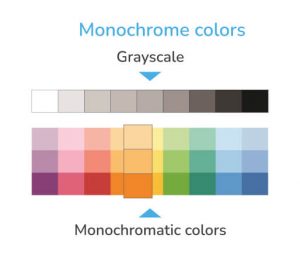
2. Typography
Font selection is crucial for the overall success of your presentation. Therefore, make sure your text is simple to see and read even if the person is sitting a considerable distance from the screen. Separate paragraphs and headings and stick with three different fonts at most (e.g., Helvetica, Gotham).
Remember that your audience will be looking at the slides while you are speaking, so avoid putting too much text on them.
Pro tip: Use a different font for your headline but ensure it doesn’t create the “comic sans” effect.
Visual aids such as charts, graphs, and images are indispensable for effectively conveying information and grabbing the audience’s attention, but you must choose them carefully.
Make sure to move from this to this:
Pro tip: If there’s a diagram, chart, or other visual that you don’t plan to walk your audience through, cut it.
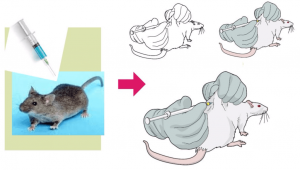
Here’s a good scientific presentation example to follow:
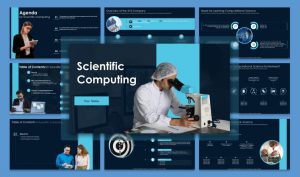
Now that you know how to make a scientific presentation and what to pay attention to when creating one, let’s move on to the scientific presentation tips from the best designers of our professional presentation services .
Top 10 tips on how to present a scientific paper
Tip #1: Know your audience
View the presentation as a dialogue with the audience rather than a monologue, and always consider the interests and expertise of your audience. This will help you tailor your scientific presentation to their level of knowledge and interests.
Tip #2: Make use of PowerPoint
PowerPoint is an excellent tool for presenting scientific research if appropriately used. Generally, this involves inserting a lot of relevant visuals and minimum words with a font size of 24 points and above.
Tip #3: Tell your audience about your research rather than its background
Focus on discussing the research that you are directly contributing to. The background information should only include the bare minimum. People don’t attend conferences to hear a review of previous work. They do so to learn about new and intriguing research, so use the allotted time to your advantage.
Tip #4: Practice and rehearse
Always practice your presentation of science thoroughly before giving it to anyone. By doing so, you’ll gain a better understanding of the material and make sure your presentation flows smoothly.
Tip #5: Keep to the time limit
A basic rule of thumb is to keep your presentation to 80% of the allotted time. If you are given 55 minutes to deliver your presentation, prepare 45 minutes worth of information: 15 minutes for introduction, 25 for the main aspects of your presentation, 5 to summarize and conclude, and leave the last ten for a Q&A session.
A well-done abstract, a set of carefully chosen viewgraphs, a brief “cheat sheet,” and an outline (perhaps placed in the corner of each viewgraph) should all help you stay on track throughout your presentation.
Tip #6: Don’t read from the slides
Reading from slides is commonplace in various fields, but do you really find it interesting to hear someone read their conference presentation? If reading is an absolute must, then our experts advise you to do it in such a way that no one in the audience notices it. Writing your text in a conversational tone and reading with emotion, conviction, and variations in tone is a great trick to achieve that.
Tip #7: Summarize the key points
Reiterate your main message and briefly touch on your main points in your conclusion. By doing so, you can ensure that your audience will remember the most crucial details of your presentation.
Tip #8: Use effective communication techniques
When delivering your presentation, use appropriate body language and effective communication techniques. These include maintaining eye contact with the audience, speaking clearly and at a reasonable volume, and conveying enthusiasm about your work. Remember, genuine enthusiasm accounts for 90% of a speaker’s success.
Tip #9: Engage the audience
Always ask questions and use polls or other interactive tools to interact with your audience and encourage discussion.
Tip #10: Dress for success
When preparing to give a scientific presentation, dress up professionally. This will help convey two crucial messages: you respect your audience and are willing to conform.
Wrapping up
Following the above science presentation structure and tips, you can create clear, informative, and engaging slides that effectively communicate your message to the audience. However, if you’re still wondering how to start a scientific presentation or need a PowerPoint makeover , don’t hesitate to contact our dedicated design experts!
At SlidePeak, we know that building a visually captivating presentation may be a real challenge for researchers and scientists. That’s why we’ve developed several services, including presentation redesign and creation from scratch by qualified scientific, technical, and medical designers who can make your work stand out both in science and creativity.
With over a decade of experience in presentation design, SlidePeak is trusted by thousands of researchers and scientists worldwide. So, submit your scientific presentation order today, and let dedicated experts turn your ideas into professional slides that will help you make an impact!
#ezw_tco-2 .ez-toc-widget-container ul.ez-toc-list li.active::before { background-color: #ededed; } Table of contents
- Presenting techniques
- 50 tips on how to improve PowerPoint presentations in 2022-2023 [Updated]
- Keynote VS PowerPoint
- Types of presentations
- Present financial information visually in PowerPoint to drive results

Crafting an engaging presentation script

- Business Slides
Franchise presentation: what it is and how to create an effective one

Annual report design templates and tips: how to tell a great story with financial data in 2023
- Program Design
- Peer Mentors
- Excelling in Graduate School
- Oral Communication
- Written communication
- About Climb
A 10-15 Minute Scientific Presentation, Part 1: Creating an Introduction
For many young scientists, the hardest part of a presentation is the introduction. How do you set the stage for your talk so your audience knows exactly where you're going?
Here's how: follow the the CCQH pattern -- C ontext, C omplication, Q uestion, H ypothesis. Fit your research into this pattern, and you will be able to introduce your work in just a few minutes, using just 1 or 2 slides.
The video below show how to use the CCQH pattern using an example of published scientific research. You will see how powerful -- and how adapatable -- the CCQH pattern is.
Make sure you select 720p HD on the video (bottom right corner) for best resolution and so scientific illustrations and figures are clear.
You can also find this video, and others related to scientific communication, at the CLIMB youtube channel: http://www.youtube.com/climbprogram
Quick Links
Northwestern bioscience programs.
- Biomedical Engineering (BME)
- Chemical and Biological Engineering (ChBE)
- Driskill Graduate Program in the Life Sciences (DGP)
- Interdepartmental Biological Sciences (IBiS)
- Northwestern University Interdepartmental Neuroscience (NUIN)
- Campus Emergency Information
- Contact Northwestern University
- Report an Accessibility Issue
- University Policies
- Northwestern Home
- Northwestern Calendar: PlanIt Purple
- Northwestern Search
Chicago: 420 East Superior Street, Rubloff 6-644, Chicago, IL 60611 312-503-8286
This website uses cookies to improve your user experience. By continuing to use the site, you are accepting our use of cookies. Read the ACS privacy policy.
- ACS Publications
10 Keys to an Engaging Scientific Presentation
- May 31, 2018
What makes an engaging scientific presentation? Georgia Tech Professor Will Ratcliff uses a method based on the style of nature documentary presenter David Attenborough. Ratcliff’s approach looks to capture an audience’s natural curiosity by using engaging visuals and simple storytelling techniques. Here are his 10 keys to an engaging scientific presentation: 1) Be an Entertainer First: […]

What makes an engaging scientific presentation? Georgia Tech Professor Will Ratcliff uses a method based on the style of nature documentary presenter David Attenborough. Ratcliff’s approach looks to capture an audience’s natural curiosity by using engaging visuals and simple storytelling techniques.
Here are his 10 keys to an engaging scientific presentation:
1) Be an Entertainer First : Before your science can wow your audience, they have to understand it. Before they can understand it, you must engage them with what you’re saying. Look at your presentation from your audience’s perspective and think about how they’ll relate to your material. Focus on presenting your science in a way that engages and entertains as it explains.
2) Be a Storyteller, Not a Lecturer : Don’t assume that your audience knows your field. Tell the story of your science: identify the big picture backdrop, your specific research questions, how you answer those questions, and how it affects the way we now think about the big picture.
3) Prioritize Clarity : If the audience doesn’t understand every word you use, they’ll stop paying attention, and you may never win them back. Your goal is to never lose their attention in the first place, so make an effort to be clear and have a simple narrative arc to your talk.
4) Mind Your Transitions: The easiest place to lose your audience’s focus is when you move from one slide to another. Practice the transitions in your talk to make sure the link between the ideas of one slide and the next remains clear.
5) Keep Complete Sentences Out of Your Slides: Keep the text in your slides to a minimum. Instead, use compelling visual to hold your audience’s attention while you speak.
6) Animations Are Your Friend: You can use animations to reveal new details on your slide as they become relevant to what you are saying. That way you get to control what your audience is seeing, minimizing distraction and putting laser pointers out of a job. Note: never use silly and unnecessary animations, like spinning or scrolling text, this will just annoy your audience.
7) Get Excited: If you’re not excited and energetic about your work, your audience won’t be either.
8) Look at the Audience: Don’t stare at the floor, the ceiling, or your slides while you’re presenting. Look directly at your audience, or if you’re nervous, toward the back of the lecture hall. This will help you connect with your audience.
9) Be Wary of Jokes: Scientific talks are serious by nature and you have more to lose than to gain. If a joke is poorly timed or if you misjudge an audience, you risk alienating them. Play it safe and find other ways to be entertaining unless you know your audience well.
10) Leave the Laser Pointer at Home: Laser pointers are distracting. If you feel you need one to guide your audience through a slide, that’s a sign your slide is too cluttered.
Want More Tips on Giving an Engaging Scientific Presentation? Check Out: 3 Elements of a Great Scientific Talk
Want the latest stories delivered to your inbox each month.

Introduction
Presentation methods, delivering a presentation, study methods, discussion: transform, acknowledgements, how to prepare and deliver a scientific presentation : teaching course presentation at the 21st european stroke conference, lisboa, may 2012.
- Split-Screen
- Article contents
- Figures & tables
- Supplementary Data
- Peer Review
- Open the PDF for in another window
- Get Permissions
- Cite Icon Cite
- Search Site
Andrei V. Alexandrov , Michael G. Hennerici; How to Prepare and Deliver a Scientific Presentation : Teaching Course Presentation at the 21st European Stroke Conference, Lisboa, May 2012 . Cerebrovasc Dis 1 April 2013; 35 (3): 202–208. https://doi.org/10.1159/000346077
Download citation file:
- Ris (Zotero)
- Reference Manager
Background: A scientific presentation is a professional way to share your observation, introduce a hypothesis, demonstrate and interpret the results of a study, or summarize what is learned or to be studied on the subject. Presentation Methods: Commonly, presentations at major conferences include podium (oral, platform), poster or lecture, and if selected one should be prepared to PRESENT: P lan from the start (place integral parts of the presentation in logical sequence); R educe the amount of text and visual aids to the bare minimum; E lucidate (clarify) methods; S ummarize results and key messages; E ffectively deliver; N ote all shortcomings, and T ransform your own and the current thinking of others. We provide tips on how to achieve this. Presentation Results: After disclosing conflicts, if applicable, start with a brief summary of what is known and why it is required to investigate the subject. State the research question or the purpose of the lecture. For original presentations follow a structure: Introduction, Methods, Results, Conclusions. Invest a sufficient amount of time or poster space in describing the study methods. Clearly organize and deliver the results or synopsis of relevant studies. Include absolute numbers and simple statistics before showing advanced analyses. Remember to present one point at a time. Stay focused. Discuss study limitations. In a lecture or a podium talk or when standing by your poster, always think clearly, have a logical plan, gain audience attention, make them interested in your subject, excite their own thinking about the problem, listen to questions and carefully weigh the evidence that would justify the punch-line. Conclusions: Rank scientific evidence in your presentation appropriately. What may seem obvious may turn erroneous or more complex. Rehearse your presentation before you deliver it at a conference. Challenge yourself to dry runs with your most critically thinking colleagues. When the time comes, ace it with a clear mind, precise execution and fund of knowledge.
Over time communication standards between -scientists have evolved along with improved scientific method, increasing scrutiny of analyses and upholding to the highest level of evidence anything we call research. Scientific presentation is a professional way of sharing your observation, introducing a hypothesis, demonstrating and interpreting the results of a study, or -summarizing what has been learned or is to be studied on the subject. Professional presentations help disseminate research, make peers aware of novel approaches, findings or problems. These presentations make conferences memorable for both presenters and the audience. Anyone can recall the most exciting and most boring, the most clear and most convoluted, the most ‘-seriously?!' and the most ‘wow!!' presentations. Most presentations, however, fall in the in-between level of ‘so what?', ‘I did not quite get it …', or ‘maybe'. This means that all the work the authors have put in did not result in a paradigm shift, -advancement, or even ‘well, this is good to know' kind of an impact. We struggle to shape up our young presenters to make their science clear and visible, their presence known and their own networks grow.
Having initially struggled in preparing and delivering presentations ourselves, and having seen the many baby steps of our trainees now accomplished or shy of a track record, we have put together these suggestions on how to start, organize and accomplish what at first sight looks like a daunting task: presenting in front of people, many of whom may have expertise way beyond your own or who are scrutinizing every bit of data and ready to shred any evidence you might have to pieces. Unfortunately, there is no other way to advance science and become recognized than to survive this campaign from conception of a project to publication. This campaign has its own (often interim and hopefully not singular) culmination in a scientific presentation. This presentation also comes with question and answer sessions and importantly, with you and the audience possibly coming out of it with new messages, new thinking and even energy for breakthroughs, no matter how small or large the leap would be. So let's explore how to prepare and deliver a scientific presentation.
Currently, the common types of presentations at major conferences include podium (oral, platform), poster or lecture. Although seemingly different and at times some being more desirable over others, they all share the same prerequisites and challenges for successful execution. We will examine common threads and identify unique aspects of each type of these presentations. However, the first prerequisite for any scientific presentation (successful or not) is you, the presenter.
An effective presenter should have led the study, participated in the analysis and drafting of the abstract and manuscript, i.e. the presenter should know the subject of his or her talk inside out. One should therefore be prepared to PRESENT:
P lan from the start (place integral parts of the presentation in logical sequence);
R educe the amount of text and visual aids to the bare minimum;
E lucidate (clarify) methods;
S ummarize results and key messages;
E ffectively deliver;
N ote all shortcomings, and
T ransform your own and the current thinking of others.
So, as the scuba-diving instructors say: plan the dive, and dive the plan. The most important parts of scientific presentations should follow the logic of delivering the key messages. For the original presentations (platforms or posters), it is easy to simply follow the accepted abstracts, most often structured following the IMRaD principle: Introduction, Methods, Results and Discussion (Conclusions).
Lecture format, content and logical flow of information often depend on the topic choice, which should be appropriate to the level of audience [ 1 ], time allotment and the target audience. Most competitive conferences offer short times even for invited lecturers as experts are expected to demonstrate cutting edge science, which assumes that the audience is already knowledgeable and the expert is capable of delivering information that sparks new thinking. The suggestion here to both novice and experienced speakers is to quickly summarize why the subject of presentation is important (catch audience attention [ 2,3 ]), where we are now (show the landscape of completed studies that established the common knowledge or conundrums, equipoise, etc.) and to move then to the latest advancements (this may include just-in publications, ongoing or planned future research or the most provocative take on the evidence out there).
Turning back to original presentations, advice is available on how to write abstracts following the IMRaD principle [ 4 ] and how to draft subsequent manuscripts [ 5 ]. We cannot stress enough the need to quickly follow-up the abstract submission with drafting the full manuscript. If the authors complete a manuscript before the presentation at a conference, the presenter will have a luxury of material to work with to compile either a set of slides for the podium or text and illustrations for the poster. If a manuscript was drafted and reviewed by coauthors, the challenge for a presenter is going to be a good one: trim down most sentences as both slides and posters benefit from short statements (not even full sentences) and large font sizes so that text can be easily read from a distance. Put yourself into the audience: your slides should be readable from the last row of a large room or a huge ballroom and your poster should be still readable from at least 2 m. The latter will allow better poster viewing by several people during guided poster tours or when a small group gathers spontaneously to view it.
This logically brings us to the second step: use bare minimum of any type of information to deliver your -presentation. Minimum text, minimum lines, minimum images, graphs, i.e. provide only the essential information as the audience attention span is short. Brevity, however, should not compromise quality: you should always stride to have the highest quality visual aids since these leave an impression on the audience [ 6 ] and good quality graphics are attributes of effective presentations [ 3 ].
At the same time, we cannot overemphasize the need to stick to time limits set for a specific presentation. Presenters should test their presentation in ‘real life' at home to their friends or at work in front of colleagues and ask for criticism. It is better to get criticism from members of the department (including your boss) than in a huge auditorium. Use a simple rule: an average talking time is 1 min per slide in oral presentations. You can then see how little you really can allocate to each slide if you load your talk with the most complicated visual presentation of data.
Let's go to the specifics. The ‘Introduction' slide usually includes a very brief description of background and should explicitly state the research question. Call it ‘Introduction and Study Purpose'. Adding a separate slide for study aims lengthens the talk. Fewer slides also reduce the chance of making an error when advancing them on the podium that can send presenters into further time deficit and stress, a commonplace even with those who know how to right-click.
Methods should have bullet points, not necessarily full sentences since you will be speaking over slides projecting or in front of the poster to connect brief statements showing behind you. The basic rule is not to read your slides or poster, nor tell the audience to read what the slide or poster says. Think of your slides or display material as a reminder to yourself of what you are supposed to say in detail and leave the noncritical words out of the slide and off the poster as it is an even easier source to pack with unreadable information. When you develop a presentation imagine you are a novice to the field who would like to be educated and taken on a journey while seeing and hearing the presentation. What can I learn in these few minutes? As the presenter, also think ‘what can I pass to the audience in these few minutes?' Further advice on how to plan, focus and arrange material to support key messages is available [ 7,8 ].
Results are the key part of any scientific presentation, podium, poster or lecture, and the most time, space and careful ascertainment should be allotted to this section as is necessary and feasible. It is vital to pack your presentation with data that support your key messages. Remember, a picture is worth a thousand words but show only quint-essential images or graphs. If appropriate include statistics and make this easy in structure, i.e. use formats or values known by everybody such as odds ratios, Kaplan Meier curves, etc. (do not forget to include these data in the abstract as abstracts without data, numbers and calculations are often low rated or rejected). After presenting data, show what you think of that or what the limitations are since you thought more about this than the audience, at least through preparation of your own presentation.
The last two concluding paragraphs (poster), comments (this section of a lecture), or slides (podium) are supposed to cover study limitations and conclusions. These should be the most carefully thought through, strategically worded and evidence-based part of your presentation. Your reputation depends on the quality of data interpretation. Also, think about a take-home message with the main message you want to be remembered. When practicing your presentations, deliver your talk to your nonmedical spouse, boyfriend or girlfriend: by the end of your presentation he or she should be able to repeat the take home message with best-prepared presentations.
After conclusions, an ‘Acknowledgements' slide is nice to have at the end showing whom you are grateful to, but it will not rescue a hopeless presentation. The ‘thanks to my colleagues' should not come at the expense of time, quality and content of your scientific presentation. There is no need to thank multiple people like they often do at the Oscars. You have to rationally consider who and when to acknowledge if their functions were important to your work but they were not listed among coauthors. If you received funding to support your work, it is very important where appropriate or at the end of the presentation to acknowledge your sponsors or grant providers (such as NIH Institute and grant number, MRC grant, INSERM or DFG labels, etc.). The higher the scientific level of the grant donors, the more your presentation will be recognized.
While preparing any part of your presentation, remind yourself to check whether the included material is any good and worthy of inclusion. You can simply ask, ‘am I wasting time during the oral presentation or space in the poster by including this and that?' The answer lies in checking if this material is directly related to the study aim, data obtained, or in support of conclusions drawn.
Table 1 summarizes how you should structure the sequence of slides for the podium presentation. If you are only given 8 min to present + 2 min for questions (10 min total), you can see that with 8 mandatory slides you are already at the limit of 1 min per slide. In due course, we will give you tips on how to reallocate time within your presentation to expand the Methods and, most importantly, the Results section as needed.
Basic structure for a podium presentation of an original paper

Always clarify study methods. Posters offer a greater freedom since you can show details of your experimental setup or the methodology of your study design. A podium presentation often requires abbreviated mention of key elements of design, scales, inclusion/exclusion criteria, intervention or dependent variables and outcomes. This requires diligent work with your coauthors and biostatisticians to make sure that you are brief but clear and sufficient.
A well-assembled Methods section will lead to a shorter Results summary since your clear statement of the study aim and key methodology logically leads to audience anticipation of the primary end-point findings. There are key messages and delivered data points that distinguish effective and clear presentations from those resulting in confusion and further guesswork.
Effective presenters capture audience attention and stay focused on key messages [ 1,2,3,6,7,8 ]. A study was performed at scientific conferences asking reviewers to identify the best features of effective presentations [ 3 . ]The most frequent comments on best features of presentations with respect to ‘content' were identifying a key concept (43% of presentations) and relevance (43%). Best features in evaluations of ‘slides' were clarity (50%), graphics (27.3%) and readability of the text and font size (23%). Finally, best features in ‘presentation style' were clarity (59%), pace (52%), voice (48%), engaging with the audience (43%), addressing questions (34%) and eye contact (28%) [ 3 ].
Here are some tips on how to avoid forcing yourself to rush during a talk. Before you start (usually in the intermission or just before your session) familiarize yourself with the podium and learn how to advance slides and operate the pointer or point with the mouse. If you stumble at the beginning, you start your presentation with a time deficit.
Get to the podium while you are being introduced and start right away (it is the responsibility of the moderator to properly announce you, your team and the title of the talk and it is the responsibility of the conference organizers to have your title slide showing during the moderator's announcement). Do not read or repeat your study title. Thank the moderators and while the title slide is showing you may consider briefly thanking your coauthors/mentor here in just a few seconds.
Show the ‘Conflicts of Interest' slide next and disclose if any conflicts are related to the study subject. If they exist, conflicts should be acknowledged briefly but clearly. Do not show a slide with several conflicts and tell the audience ‘here are my conflicts' and switch to the next slide. It is important to simply say, ‘pertinent to this study I have …' or ‘this study includes an off-label or investigational use of …'. Now you are logically ready to turn to the subject of your presentation.
Start with a brief summary of what is known and why is it important to investigate the subject. This -introduces the audience to the subject of research and starts the flow of logic. If you are facing a challenge to present a complex study within in a short allotted period of time (such as 8 min for podium or a just a few minutes during a guided poster tour), do not waste time. You may cut to the chase and simply say why you did the study. Coming with straight forward messages, which are authentic and concerned about the scientific question, gets you more credit with the audience than careful orchestration of a perceived equipoise. However, we have digressed.
For an effective message delivery, identify two people towards opposite far ends of the audience and speak as if you are personally talking to one of them at a time and alternate between them. If lights shining in your face are too bright, still look towards the back of the room (or from time to time directly into the camera if your talk is being shown on monitors in a large ballroom) and do not bury your head into the podium or notes that you might have brought with you. The nonverbal part of any presentation and the presenter's body language are also important [ 6 ]. At all cost avoid bringing notes with you to any scientific presentation since you should have practiced your talk enough to remember it or you should be familiar with the subject of your lecture to the point that even if you have just been woken up, you can still maintain an intelligent conversation. Do not count on ‘it will come to me' - practice your talk! Further advice on effective presenting skill is available [ 2 ].
Remember that at international conferences many attendees are not native English-speaking people. Thus speak slowly and train your voice for best possible pronunciation! This recommendation is applicable to natives of English-speaking countries too. Native English speakers from the UK, Commonwealth countries and the USA tend to speak fast, with a variety of accents that international audiences may not understand easily while the interpreters may not be able to keep up. When speaking, do not turn away from the audience and look at your slide projection on the main screen or at your poster all the time. If it is necessary to remind yourself what to talk about next, advance the slide, briefly glance at it, turn to the audience and continue your presentation. Turn to your slide again only if you have to use a laser pointer or a mouse on the computer screen. Do so briefly, underline the important finding, point to the key part of an image and avoid long circular pointer motions around the whole text line or big areas of graphic illustrations. It is distracting. Try to use the pointer only when necessary and do not read your slides with the pointer constantly aiming at where you are reading.
When presenting your methods, clearly state the type of study, e.g. retrospective analysis, case series, -cohort or controlled trials, etc., and describe patient inclusion/exclusion criteria. If too numerous, only list the major ones. As an example, in a clinical trial of a fibrinolytic agent the list of exclusion criteria could be very extensive, so how can you present this on a dime? Your slide should focus on the key inclusion criteria since a patient who did not have those was obviously excluded, and an audience at a stroke conference is generally familiar with multiple exclusion criteria for tissue plasminogen activator treatment. So, your slide or poster may have the following in it (highlighted in bold ) to which you may add the plain text in your (limited) verbal statements:
Our Major Inclusion Criteria: were
• total Pre-treatment NIHSS score >6 points
• Presence of mismatch on MRI determined by -( EPTITHET ) trial criteria
• Age <80 years and
• Time from symptom onset <8 h
After that, you may omit including a slide with the long list of exclusions in favor of time. If there is a -specific contraindication new to the treatment agent in your study, you could say ‘in addition to well-known contraindications for systemic thrombolysis, patients were excluded if they had …' at the end of showing the ‘Major Inclusion Criteria' slide as shown above. Similarly, in a poster, list only the most relevant inclusion and exclusion criteria and walk the audience through the methods without stumbling on too many detail -disclosures. The audience will lose track of where you are going.
It is important to keep a balance between sufficient disclosure of study methods and the length of this part of your presentation. It is always helpful if you have a prior study that used a similar or from which you developed your methodology that has already been published - you may show a reference to this study and move on faster without sacrificing the quality. For example, ‘ultrasound tests were done by experienced sonographers using a previously published standard protocol', ‘CT scans were read independently using the ASPECTS score', and ‘sICH was defined by the SITS-MOST criteria'. Say this while showing or pointing to the line and published source reference on your visual aid.
Clearly organize and deliver the Results section. Include absolute numbers and simple statistics before showing advanced analyses. Remember not to show data in Methods and equally so do not introduce new methods when presenting Results. As a rule, describe characteristics of the general study population or balance/imbalances between target and control groups. Follow this by a slide that shows the primary end-point findings or observations that directly address the study aim or research question. This follows the logic of a scientific presentation and will help you avoid deviations to side observations no matter how unexpected or valuable they seem. Stay the course, address the main question first and only then show additional findings. When presenting a poster, point to the area where the key results are displayed. Unlike a slide presentation or lecture where the audience is forced to see one slide at a time, busy posters could be distracting. Posters that are heavily packed with graphs, images, tables and text are often difficult to follow during a brief guided poster presentation tour. It is the presenter's responsibility to drive the audience attention to key results in a logical sequence. When you present a graph, start by telling the audience what is shown and in what units on each access, and briefly point to the numbers on each axis.
Remember to present one point at a time. It makes common sense but sometimes may be difficult to follow if complex experiments or studies with multiple confounding variables have to be navigated through a brief presentation. Do not lose sight of your original research question or the objective of your lecture. Remember what you have shown so far, and what logically should be shown next. If you are pressed on time or made a mistake while advancing slides, take a deep breath and relax. Clear state of mind will buy you time. Racing thoughts such as ‘I have to cover that and that, and oh, that too' are not helpful. Dry runs, or practice presentations are essential for you to master the material that you need to present.
After finishing the Results part of your presentation, remember not to introduce more new results in Discussion and Conclusions. That surprise is hard for the audience to process. If you'd like to reemphasize the main finding, use the following suggestion. Let's say your goal was to show the prevalence of a new syndrome in your study population and you found it to be 24% (your primary research question). Unexpectedly, you also found that patients with this syndrome have an increased risk of dying (RR 2.08, 95% CI 1.23-4.34). These numbers and statistics obviously belong to the Results section. However, you want to stress in your conclusion once again how important your finding is. You can present it as follows: ‘Conclusions: nearly a quarter of stroke patients can be affected by this new syndrome and, if present, it doubles the patient chance of dying in hospital'. This recaps the main finding and makes practical interpretation of the relative risk estimate.
Before you jump into Conclusions, however, we always encourage presenters to note and openly discuss current study limitations. This improves your own assessment for biases and ranking of the level of obtained evidence. If you do not disclose the obvious study limitations, you will most likely receive questions after your presentation that will point to these shortcomings. Thus, instead of a positive discussion of how your study advances our knowledge, the discussion with the audience will focus on shortcomings and the key message may be lost with the negative audience response. Unlike Twitter™ or future media-based quick popularity scores, science can only advance when it endures the highest scrutiny (even though in the future presenters may be concurrently judged by the audience as our technologies improve). Regardless, if you are a good scientist, prepare yourself to stand the ground if the evidence is behind you. Be proactive, acknowledge study limitations and how you attempted to control for biases, etc.
In a lecture or a podium talk or when standing by your poster, always think clearly, have a logical plan for presentation parts that should be covered next, gain audience attention, make them interested in your subject, excite their own thinking about the problem, listen to questions and carefully weigh the evidence that would justify the punch-line. This will support your conclusions!
With posters, we often see a Discussion section but no conclusions listed, or they are listed in the abstract but not in the poster itself. This will lead to an obvious question after you stop presenting: ‘So, what is your take on this?' Our advice is, have your conclusions listed and be prepared to defend them point-by-point as the question and answer part could be challenging. If you do not understand the question, ask for clarification rather than talk nonsense.
To arrive at the right conclusions, you have to rank scientific evidence in your presentation appropriately. What may seem obvious may turn erroneous or more complex at a closer look by experts. Helpful hints here include you maintaining careful documentation while you are conceiving the project, designing it with your colleagues and consulting with a biostatistician on all steps taken in ascertaining the study population, interventions, end-point data collection and bias verification. Put all methodological issues against your findings and this will give you an idea of the strengths and weaknesses of your study. Preparing and delivering your presentation is a great experience to see if your knowledge and gained expertise stand up to peer scrutiny.
Rehearse your presentation before you deliver it at a conference. Challenge yourself to dry runs with your most critically thinking colleagues. Quite often, it is not the presentation itself but these questions, comments and subsequent late night debates with your colleagues that bring new thinking, advance our understanding and spark new ideas. This is the chance to transform your own current thinking and that of your peers. Think about your upcoming presentation, whether it is a podium, poster or lecture, as an opportunity, a launch pad, a reward for the hard work you did to bring this project to the attention of the scientific community.
When time comes, ace it with a clear mind, precise execution and fund of knowledge.
Before his first oral presentation in English, Dr. Alexandrov was nervous and asked his mentor, Dr. John W. Norris, for a dry run. Dr. Norris generously came to listen to him at 10 p.m. the night before, and Dr. Alexandrov survived his talk.
Email alerts
Citing articles via, related articles.
- Online ISSN 1421-9786
- Print ISSN 1015-9770
INFORMATION
- Contact & Support
- Information & Downloads
- Rights & Permissions
- Terms & Conditions
- Catalogue & Pricing
- Policies & Information
- People & Organization
- Stay Up-to-Date
- Regional Offices
- Community Voice
SERVICES FOR
- Researchers
- Healthcare Professionals
- Patients & Supporters
- Health Sciences Industry
- Medical Societies
- Agents & Booksellers
Karger International
- S. Karger AG
- P.O Box, CH-4009 Basel (Switzerland)
- Allschwilerstrasse 10, CH-4055 Basel
- Tel: +41 61 306 11 11
- Fax: +41 61 306 12 34
- Email: [email protected]
- Experience Blog
- Privacy Policy
- Terms of Use
This Feature Is Available To Subscribers Only
Sign In or Create an Account
- Skip to primary navigation
- Skip to main content
- Skip to primary sidebar
- Skip to footer
Bringing the World's Best Biology to You
Designing Effective Scientific Presentations
- Duration: 42:08
00:00:00.17 You're probably tuning into this talk because you're interested in improving your speaking skills 00:00:03.26 and you know, let's face it, none of us really have had a lot of explicit training 00:00:08.20 in presentation as scientists. 00:00:11.03 So, ok, we're not experts. We may not be experts at public speaking, 00:00:16.26 but I would actually suggest to you that we are all experts at listening to talks. 00:00:20.20 Think about the number of hours that each of us has sat in a chair, in a lecture room, 00:00:26.15 in a seminar, in an auditorium, listened to journal clubs, to all kinds of talks, 00:00:33.24 we've spent hours and hours and hours listening to talks. 00:00:37.14 So we're experts at knowing what a good talk is because we know what we want delivered as an audience member. 00:00:44.23 So, if you think about it, why do we go to a talk? 00:00:47.20 Well, we're interested, obviously, in learning some about interesting and novel science. 00:00:52.19 We are going to listen to speakers who we think are credible and knowledgeable 00:00:58.24 and doing novel work. 00:01:01.00 We are responsive to speakers who are enthusiastic and who just keep us awake 00:01:08.28 and we want a talk that is well organized, clear, 00:01:11.11 a talk that we can follow, a talk that's not laden down with jargon 00:01:16.23 and a talk that gives us enough background to understand 00:01:19.12 what's going on, we want to be able to see the data, understand it, interpret it 00:01:23.12 and then make our own decision about the science. 00:01:26.23 So, we're all experts at listening to talks, why can't we just translate what we know 00:01:31.07 we want as an audience member into how we give a talk as individuals. 00:01:37.07 Let's think about something; how many times have we each seen a slide like this. 00:01:41.25 We've seen it a zillion times, right, we're sitting there, in a chair, 00:01:46.06 listening to a seminar, a slide like this comes on. 00:01:49.05 And we have no idea of what to look at. 00:01:52.20 Are we supposed to read all of this text? 00:01:55.07 Are we supposed to look at this figure, or that figure 00:01:58.13 or that figure? 00:01:59.17 We're overwhelmed visually and we've all seen this slide a thousand times. 00:02:02.29 Now, I just want to make a quick disclaimer. 00:02:05.18 This was not my work and I'm not suggesting for a second that the authors of this really gorgeous paper 00:02:12.01 would have shown a slide like that. 00:02:14.24 But, if I were giving a journal club on that topic, I might have produced a slide like this for you 00:02:19.16 in trying to tell you about these data. 00:02:22.07 So, when we think about what we know instinctively is just a disaster, why do we keep doing it 00:02:28.18 again and again and again? 00:02:31.03 I think that we need to know some basic rules about power point 00:02:34.19 and how to structure a talk 00:02:36.13 in order to enable these visuals to work effectively 00:02:39.24 as we're teaching, as we're speaking about our own science, 00:02:44.05 as we're presenting journal clubs. 00:02:45.26 So, what I'm going to do is first of all go through some basics about power point 00:02:48.24 and then we're going to think about how you structure a talk 00:02:52.26 in order to lead a member of the audience through the data 00:02:56.28 in a way that they will understand each piece that you're presenting and 00:03:00.26 be able to really understand what the take-home message is. 00:03:03.05 First of all, what font should you use? 00:03:06.08 It turns out that some of the default fonts in power point and keynote 00:03:10.16 are exactly wrong. The font you should use is a Sans Serif font. 00:03:14.13 What is a Sans Serif font? 00:03:15.03 San Serif fonts are fonts without little doober-hicky lines 00:03:20.06 and stuff at the bottom of letters. 00:03:22.04 And that's to be contrasted with Serif fonts, which have all the little doober-hickies at the bottom of each letter. 00:03:28.19 So, why do you use one and not the other? 00:03:30.20 Well, visual psychophysicists have discovered that using a Sans Serif font when you're projecting text 00:03:39.18 onto a screen like this makes it easier for the audience to read the text 00:03:44.08 quickly. These fonts down here, the Serif fonts, this is the font if you have novel you were going to read it in bed, 00:03:50.17 it's very easy to read. 00:03:52.07 And that's why books are printed with Serif fonts, 00:03:55.03 but you should choose, and there are a range of choices that you can make, 00:03:59.12 one of the Sans Serif fonts for your scientific presentations. 00:04:02.11 How big should your font be? 00:04:04.26 Again, be careful of some of the default font sizes. 00:04:08.16 One of the defaults in Power Point is astronomically huge, 00:04:11.24 bigger than this one right here, it's like 42. 00:04:14.11 It's way too big! You don't need that. 00:04:15.21 So, the range of font sizes that you should use are shown here. 00:04:19.06 Anywhere from 18 down to 36, with one exception. 00:04:24.01 We often, in our scientific presentations, will want to insert a reference to a published paper, 00:04:28.15 which isn't really the focus of the slide, but we want to have it up there 00:04:33.02 for scientific accuracy. 00:04:34.10 So, under those circumstances, you might use a 14 point 00:04:38.12 font, to put your reference at the bottom of the slide. 00:04:42.06 Other than that, just work in this range and you'll be good. 00:04:45.04 Avoid using capital letters. This makes it clear why. 00:04:49.05 It's actually really hard to read all capitols. 00:04:51.16 And secondly, in this age of email, I think we all know that capitalizing everything 00:04:57.19 is the visual equivalent of shouting at someone. 00:05:00.19 So it's just not polite. In addition, when you're thinking about titles 00:05:04.26 or how you would actually capitalize words, 00:05:07.21 use a sentence format. In other words, don't capitalize every word 00:05:11.21 of your title or your text down here. 00:05:15.10 Having capitals of every word slows down the eye and makes it difficult to read. 00:05:20.17 So, remember, the text and the slide is really there for the audience to be able to read quickly 00:05:26.07 and easily. 00:05:27.20 Color schemes are really important and thinking about the background of your slides. 00:05:33.27 Now, we've all seen a lot of slides that have 00:05:37.05 very fancy backgrounds and in fact, 00:05:40.03 you want the simplest possible background. 00:05:42.21 For example, a plain white background with dark letters, 00:05:45.29 either black or blue. 00:05:48.28 That works very well; it's high in contrast 00:05:51.05 and the only thing that appears on the slide is the information that your audience needs 00:05:56.02 to understand this slide in the context of your talk. 00:05:59.21 Avoid using the fancy patterned backgrounds. 00:06:05.03 You don't need your company or university logo 00:06:08.16 on every slide. You do not need a DNA double helix 00:06:11.19 running down every slide. 00:06:12.22 All of that is extraneous. Maybe it might appear on your first slide, 00:06:16.12 but then get rid of it. 00:06:18.08 Streamline it down to as simple as possible and think about the contrast of letters. 00:06:24.08 So dark against light works really well, 00:06:26.17 light against darks works very well. A black background with white letters 00:06:30.12 or bright yellow. Again, high contrast, easy for the audience to read. 00:06:35.12 When should you use which? Well, if you were to give a talk 00:06:39.19 for example, at a very large symposium, with hundreds of people, 00:06:44.06 a very big room, psycophysically, and in terms of the projector, 00:06:49.19 the contrast is greatest if you use a dark background 00:06:52.24 and light letters, under that context. 00:06:55.03 So it's easier to project at high contrast. 00:06:58.10 If you're teaching in a small room, or you're in a circumstance where you're worried about people staying awake, 00:07:07.00 then I would use a white background, with dark letters. 00:07:10.16 That is actually more effective. 00:07:13.13 However, you do want to think about your science. 00:07:15.24 For example, in my science, I use a lot of fluorescence, photomicrographs, where I actually prefer a dark background 00:07:25.20 because the contrast, I want people to be dark adapted so they can really see my data. 00:07:30.22 So in one of my scientific seminars, regardless of whether I'm in a small room or a big room 00:07:35.01 I use a black background. 00:07:36.27 It just works better for my science. 00:07:38.27 There are certain color combinations that you should avoid. Red/green is bad: 00:07:44.04 this is incredibly difficult to look at. In addition, a large fraction of the population is red-green color blind 00:07:51.15 and finally, red is really angry color. I actually saw an entire seminar once 00:07:56.15 with the background color of the slides that was red and 00:08:01.15 I was so agitated by ten minutes into the talk, so avoid that. 00:08:05.02 Other color combinations can be equally bad 00:08:09.07 and this is bad not because the colors are unpleasant 00:08:13.07 but because the contrast here is not big enough 00:08:16.22 for an audience member to actually read 00:08:19.16 the letters against this background. This is important because in science we're often 00:08:24.06 creating, for example, these cartoons, of, for example, of a signal transduction pathway, 00:08:30.19 where you want each protein to be a different color. 00:08:32.03 So we're always looking for a new color for a new protein as we're going through 00:08:36.19 a flow of talk, but we want to make sure that each protein that might in fact be this blue color 00:08:43.14 would then have a label on top of it that's high contrast. For example, for this, it might be black instead of green. 00:08:49.23 Let's think now about how to lay out a slide visually in Power Point 00:08:53.21 so that it's really easy for an audience member to follow the content of your talk. 00:08:59.20 First of all, I strongly recommend that every slide a heading at the top 00:09:04.20 and the best heading is actually a statement, a simple sentence 00:09:08.28 that says in plain english what the bottom line of the slide is. 00:09:13.11 Now you might say, Sue, excuse me, this is not a statement, and you're right 00:09:17.12 ok, busted, this is really going through an outline for this particular talk, but in my science talks 00:09:22.22 every slide is headed by a statement. 00:09:26.10 If you're going to include text in a slide, it's very important to just limit the amount of text. 00:09:32.22 I really, strongly urge you to use no more than two lines of text 00:09:38.16 in a text block. Why is that? 00:09:40.14 The minute you show a big block of text like this, I have lost you as an audience member. 00:09:45.21 You don't know at this point whether you should be reading all of this stuff or listening to me. 00:09:51.03 And if you as an audience member are now distracted and confused about what you should be doing, 00:09:56.21 I as a speaker have lost control of my talk. 00:09:59.25 So, don't use things like this, there's one exception, there might be a wonderful quotation that you want to include in your talk. 00:10:07.05 For example, a quote from The Double Helix or a quote from the beautiful writings of Ramon y Cajal 00:10:15.08 if you're a neurobiologist. And under those circumstances it's great to include the full text. 00:10:20.05 What I recommend you do if you do include a quotation, is rather than read it word by word, 00:10:25.06 instead sort of paraphrase it as you're going along. 00:10:27.13 You might say, well, the reason for limiting blocks of text to just two lines is 00:10:32.01 if it goes on forever, people in the audience are going to have to make this huge effort 00:10:36.08 to read it and that will preclude them from paying attention to what you're saying. 00:10:40.12 So, you can paraphrase a quote, that's very effective, unless it 00:10:43.29 is very poetic and you want to do a dramatic reading, and that's fine too. 00:10:47.21 Lists should be short; try to limit your lists to just three items. 00:10:54.01 Avoid like mad long lists and if you're going to have a list, 00:10:57.24 I strongly recommend that you use the animation feature in PowerPoint 00:11:02.13 to unveil your list one at a time. 00:11:05.22 So, when you're talking about item one in your talk, 00:11:07.17 that will appear. And only when you're ready to talk about item two 00:11:12.28 does that second item appear 00:11:14.24 and likewise, when you're ready to include item three, that will come up as well. 00:11:18.25 Be very generous in a slide with empty space. 00:11:23.01 It's more effective, it's more powerful for the audience. 00:11:26.19 And this is why. If you start to just load your slide with stuff, 00:11:30.11 it's visually overwhelming and often, you can get into a situation, 00:11:35.28 we've all been in seminars before, where something is very, very, very close to the edge of the slide 00:11:41.10 and there's a slight misalignment between the projector 00:11:45.06 and the screen that then results in stuff getting cut off. 00:11:49.16 And we've all been at talks, where someone says "oh, I'm sorry, If you could have seen the slide, 00:11:53.28 then you would have been able to read it." 00:11:55.26 Well, just leaving some space at the different edges, the boundaries of the slide 00:12:00.08 and don't forget about leaving some space at the bottom. 00:12:03.14 If you're in a room where everyone is sitting at the same level, 00:12:07.27 people in the back are trying to see over one another's head, 00:12:11.07 so if you're stuff is too close to bottom, some people in the back can't see it. 00:12:14.26 So, leave space on all three sides and a little space at the top, again for the misalignment problem. 00:12:19.25 Ok, let's think about the style of these slides. I urge you 00:12:25.17 most wholeheartedly to include a simple image 00:12:31.17 on every slide. 00:12:33.01 What, most slides? No, every slide. 00:12:35.28 In every slide of one of my scientific presentations, there is an image. 00:12:40.02 Why is that? Here's the deal. 00:12:43.03 We audience members who are listening to a talk take in and process information 00:12:48.28 in quite different ways from one another. Some of us 00:12:52.22 are readers and that's the reason for having a sentence at the top of each slide. 00:12:57.03 Some of us are going to take in information by reading. 00:13:00.11 Others of us are very visual. If we have an image on the slide, 00:13:04.11 then that appeals to the vision, we're primates, we're very visually oriented 00:13:08.17 so we communicate through pictures. 00:13:10.28 And the third way we talk in information is by listening. 00:13:13.23 The ideal, the perfect power point slide represents an absolutely 00:13:20.22 synchronous match between a simple statement at the top, 00:13:25.13 a simple visual and what you as a speaker are saying. 00:13:30.00 So that the same content is being delivered through all three channels 00:13:34.25 at the same time, without any distractions. 00:13:38.15 Make your slides simple, limit the number of stuff you included in each slide 00:13:44.09 and just make one or two points from each slide. 00:13:47.00 Now, we've all heard this rule, maybe most of us have heard a rule, 00:13:51.11 how many slides should you show in a particular scientific presentation? 00:13:55.15 And the rule that I learned and the rule that perhaps you learned as well, 00:13:58.27 the rule is you show one slide per minute. 00:14:02.10 So, if you're giving a twenty minute talk, 00:14:03.28 you show twenty slides. I would argue now 00:14:08.00 that that might have been true when slides were actually on film 00:14:12.07 and difficult to manipulate and there was no such thing as animations. 00:14:15.19 Now that we have tools like PowerPoint and Keynote, 00:14:19.08 that enable us to build content progressively in slides and to have things that are simple, 00:14:24.27 simple points, that we can easily change from talk to talk, 00:14:29.10 that rule doesn't really hold anymore. 00:14:31.10 And I don't think there is a firm rule, I think it really depends on the amount of information 00:14:35.14 that you're delivering in a talk. 00:14:37.13 So, make your slides simple, 00:14:39.22 don't worry about this one slide per minute rule and rather, get feedback from, as you practice a talk, 00:14:48.04 get feedback from your colleagues 00:14:49.25 about whether you're overwhelming people 00:14:51.22 with too much data and number of slides. 00:14:54.03 If your slides are simple, you can show more than one per minute. 00:14:57.09 We have all seen talks where a slide like this comes up 00:15:01.12 and what does the speaker do? The speaker does this, 00:15:04.01 the speaker says, "I know this slide is really busy, but, the only thing I really want you to look at 00:15:08.23 is this set of data right here". 00:15:11.15 We've been there, right? I've been there, you've been there. 00:15:14.24 What has the speaker just told you? 00:15:16.27 The speaker's just said, I'm too lazy to have created a slide 00:15:20.01 that is actually tailored for what I want to show you. 00:15:22.20 And we as audience members are looking at all of this stuff, 00:15:26.19 we, even if we're told to look at this, I mean, how many of us behave? 00:15:29.29 I, personally, I'm looking this and I'm wondering about that, 00:15:33.22 so the speaker has not only shown a little bit of disrespect, 00:15:37.07 and laziness to us, in my opinion, 00:15:39.27 but in addition, the speaker has lost us as audience members 00:15:43.20 because we're now wandering around the slide 00:15:46.03 and wondering, we're having our own thoughts. 00:15:48.29 So, if you're going to show a slide like this, simply take the data that 00:15:53.16 you want to show, eliminate everything else and put that up. 00:15:57.11 And then explain the data completely. 00:16:01.20 Explain to the audience what the axes are, what each color is, and remember 00:16:06.07 that this is the very first time that anyone in the audience has seen this particular graph. 00:16:12.06 You've seen it a thousand times, you get it intuitively, like that, 00:16:15.18 but they won't. So, just show the data that you want to explain 00:16:19.26 and explain the data that you show. 00:16:21.26 In other words, here's the simple rule: 00:16:24.20 if you're not going to take the time to explain it, get rid of it completely. 00:16:28.07 It doesn't belong there. 00:16:29.17 I want to show you an example of a figure that I used to show in one of my scientific presentations. 00:16:35.14 And it's a brain and it's got some protein and it shows the distribution of those proteins in the brain. 00:16:41.15 It's a pretty simple figure, the content doesn't matter to us. 00:16:45.21 But I want to show you what this figure looked like before I put it into the talk in this format. 00:16:51.12 Here's what the figure looked like in the actual paper that I took it from. 00:16:56.15 It had all of these extra labels that were extraneous, 00:16:59.16 I was never going to explain 00:17:01.07 that MGE stands for the medial ganglionic eminence because it's not relevant to the talk 00:17:06.13 so, what did I do? I took this figure, 00:17:08.22 I put it into Photoshop and I got rid of all of that, 00:17:12.01 leaving only a little landmark, the eye, to orient the audience to what we were saying. 00:17:17.20 So, you can take complex figures, export them, and simply them 00:17:22.29 in order to fit perfectly with your presentation. 00:17:26.14 We have all seen a lot of, especially with the introduction of Keynote, 00:17:33.27 some very fancy transitions between slides. 00:17:37.12 What do me mean by transition? Well, 00:17:39.05 in my talk so far, when I've advanced the slides, you simply see the new slide. 00:17:43.14 Remember when Keynote came out and the first time you were at a talk 00:17:48.06 and the speaker advanced to the next slide 00:17:50.06 and the slide formed a box, and the box rotated in 3 dimensions and then a new slide appeared 00:17:57.25 and you thought "Oh, that's really cool, that was wild!" 00:18:00.11 and then the speaker got their advance and they advanced to the second slide and 00:18:04.28 the slide then did a big spiral and then the new slide appeared 00:18:09.24 and by the third or fourth time that the speaker did that, you felt nauseated. 00:18:13.19 We, yeah, so avoid these fancy transitions, they are not in service of the talk. 00:18:18.18 There is an exception though. 00:18:21.03 There are some transitions that actually illustrate 00:18:22.09 in a very subtle way, actions. Here’s an example. 00:18:25.22 This is a slide that I've shown in some of my presentations 00:18:30.11 that have talked about the migration of neurons in the developing brain. 00:18:35.02 And in this particular talk, the point I wanted to make was that we would take out neurons 00:18:40.14 from a very small region and culture them. So, I used a very simple wipe transition. Watch this,s 00:18:45.04 it's subtle but, there's the transition. 00:18:49.04 It actually wipes from one side to the other. That sort of mimics the act 00:18:52.11 of taking something out of the brain and putting it into culture. 00:18:55.13 So, that's a sensible use, another sensible use would be if you're going to zoom in on something, 00:19:00.22 if you're going to zoom in on this region, you might use a zoom transition. 00:19:04.09 Apart from that, just advance from one slide to the next with a simple transition. 00:19:09.06 Don't drown the audience with data. 00:19:15.02 What makes a talk memorable is when a speaker communicates 00:19:20.26 a couple of take-home messages in a way that presents just enough data 00:19:27.02 to be convincing, but not so much data that the audience is just flooded with information 00:19:33.27 and can't process it. 00:19:36.02 Less is more and here's a way to think about it. Those of us who are biologists 00:19:41.00 are used to culturing cells in minimum essential medium. 00:19:44.17 Just enough of the critical nutrients and elements and vitamins, 00:19:55.07 that a cell needs to survive and nothing extra. Minimum essential medium. 00:20:00.05 Now, if you take out any one of those elements in the medium, 00:20:05.07 the cells will die. Adding more doesn't add any value to your culture. 00:20:11.18 So, if we think about minimum essential media, we can also think about 00:20:17.15 minimum essential data. Just the data that you need 00:20:21.09 to convince the audience of the credibility of your science and no more. 00:20:25.29 That's really difficult and, I think, that's the most difficult decision that we have to make 00:20:32.00 in terms of presenting a seminar. What is just enough? 00:20:36.26 And where's the line between just enough and not too much. 00:20:39.22 For that, experience helps a lot, but also getting feedback from your colleagues, 00:20:43.12 when you're practicing your talk, 00:20:44.22 to ask people, can I get rid of this? What can go? 00:20:48.19 Don't ask what can I add, ask what can go? To make this convincing and thorough, 00:20:54.02 and yet not too much. 00:20:56.04 So, I think we all realize it's really easy to use PowerPoint badly, 00:21:00.01 right? So, we've seen a zillion examples like this, of people presenting journal clubs or seminars 00:21:06.03 you see a slide like that, we as audience members, 00:21:09.28 are visually overwhelmed, we're lost, we don't know what to look at 00:21:12.21 we can't read this stuff, it's too much to read, we're distracted. 00:21:16.11 The minute a slide like this goes up, the speaker has lost the audience completely. 00:21:20.24 So, it takes a lot of work, don't get me wrong, it takes time 00:21:24.22 to use PowerPoint or Keynote effectively in a seminar because you have to think carefully 00:21:30.03 about what you need to present, what you NEED to present, 00:21:33.12 not what you want to present, 00:21:33.27 not what you'd love to present, but what you need to present 00:21:37.16 and to present it using clear, simple graphics 00:21:41.08 and clear, simple text. So, in fact, let's go through an exercise. 00:21:47.03 Let's take that previous slide, from this lovely paper from JCB, 00:21:51.04 which I actually presented for a journal club many years ago. 00:21:54.15 Let's take that previous slide, which is figure 2 from that paper, 00:21:57.10 and let's see how we can break it down into its minimum essential components. 00:22:02.10 The first decision that we have to make in terms of looking at all the data in this figure 00:22:06.10 is what stays and what goes. What's the minimum essential data? 00:22:10.07 What are, excuse my grammatical error there, what are the minimum essential data? 00:22:14.11 that we need in order to present in our journal club. 00:22:17.24 And we might decide at that point that this particular part of the figure, panel b, can go. 00:22:21.23 It's not essential, but everything else is. 00:22:24.01 So, how do we present that? Well, let's deploy our PowerPoint rules 00:22:28.00 in this context. First of all, I'm going show you how I'd present panel a. Look at it for a second, 00:22:33.25 it's got some results in a gel and it's got some images of cells. 00:22:37.15 How might I do that? Well, 00:22:39.15 here's the first figure, here's the first slide in presenting this figure. 00:22:44.09 Notice that there's a sentence at the top, and then I've taken the data 00:22:49.09 from the figure and I've added some stuff over here. 00:22:52.08 I've added two labels that help the audience 00:22:54.14 understand immediately that this is a PCR product and this is actually a Western blot. 00:22:59.15 So I've added some stuff to be helpful to the audience, but I've simplified 00:23:02.07 their focus, so there's a good match between showing this and having the text. 00:23:07.21 And what I would be saying if I were actually presenting a journal club. 00:23:11.00 And then, using a simple animation, 00:23:13.22 I would then unveil the rest of this panel. 00:23:17.10 And I've added something for this audience down here, 00:23:19.06 showing you that this is actually a photomicrograph of MDCK cells. 00:23:25.01 So that's panel a, presented in really two parts, 00:23:28.11 using a simple animation and some additions. 00:23:29.27 The next thing I might want to show actually comes from panel c, 00:23:34.29 of that figure. And I've added a bunch of stuff here to be audience friendly. 00:23:39.25 First of all, notice that there's a sentence at the top, a statement of what's going on. 00:23:44.04 I'm showing just one simple panel, I've added a label, 00:23:48.15 and I've added this statement to help the audience that 00:23:50.21 we're looking down at the surface of these cells. 00:23:52.28 from the lumen. 00:23:54.28 I've also added some color coding so that they know what proteins are visualized 00:24:00.19 in different colors. That wasn't in the original figure, I added that 00:24:04.22 because who is this slide for? It's for the audience. 00:24:06.04 The audience needs this. And then using an animation, we'll then show a side view 00:24:11.01 of the same cells, that' s the control cells. Now watch what happens. 00:24:14.17 Two things happen; the sentence at the top changes, 00:24:17.18 cause there's a new message, and we've added the contrasting view 00:24:21.24 of the cells that have this particular protein knocked down. 00:24:25.26 Let's now think about the last part, a new sentence that really states that 00:24:30.29 this protein is essential for these cells to form little microvilli 00:24:34.13 and in the absence of protein, they don't. 00:24:37.15 So, now we've presented that complicated figure in a few parts using some simple animations 00:24:44.06 in a very audience-friendly format. 00:24:46.07 So, what's the bottom line with PowerPoint? 00:24:48.18 Make simple slides, simple slides, that make one or two points. 00:24:52.06 Build your content progressively using animations, rather than present everything all at once. 00:24:58.02 Just show one, PowerPoint and Keynote, they're all about control. 00:25:02.29 They're controlling what people see, what you're saying, and what they're reading 00:25:08.19 and have all those match at the same time. 00:25:10.19 And remember, if you're not going to talk about it, just leave it out. 00:25:15.06 If you're not going to explain it, it doesn't belong there at all. 00:25:18.07 It goes. Ok, that's what I wanted to tell you about PowerPoint, I hope that's helpful. 00:25:24.12 And now we want to transition into thinking more broadly 00:25:27.24 about how to structure a talk. 00:25:31.14 So that its organization is clear to the audience. 00:25:35.14 And I think about it as almost taking someone by the hand 00:25:37.24 and walking them through the science, right, 00:25:39.19 and saying, here's what I want you to see now 00:25:42.29 and here's the path that we’re following, here's where we've just been 00:25:44.13 and here's where we're going. 00:25:46.02 So, a good talk is like a good paper, it has a structure, 00:25:49.14 right, a good talk starts out with a big question 00:25:53.28 and then we build content over time, we go through the meat of the talk 00:25:57.11 and then we end with a conclusion that basically reaches back out to the big issues that we started with. 00:26:02.24 Same way as we write a paper, why are so bad at actually doing this at talks? 00:26:06.21 Well, if we discipline ourselves to do it, I think we can do it better. 00:26:10.02 I'd like to show you an example from one of my own seminars 00:26:12.22 of how I actually structure an introduction to define the really big question 00:26:18.02 and then give enough background information 00:26:20.20 to enable the audience to be able to follow the meat of the talk 00:26:25.18 in the middle. 00:26:26.10 And as I'm doing that, I also want to show you a trick that I've learned 00:26:31.18 that I think is extraordinarily effective at giving good talks. 00:26:36.29 And that's an idea that I call something like a home slide 00:26:41.15 or a home image. It's a picture, 00:26:44.23 maybe a cartoon, an image of some sort, that is going to signal to the audience 00:26:50.18 that you're at a point in the talk where you're going to make a transition. 00:26:53.17 It's a little signal to the audience to perk up 00:26:55.14 because you're going to tell them where you've just been, 00:26:59.00 what it means and where you're going next. 00:27:00.21 So, as I show you the introduction to one of my talks, 00:27:04.01 I'm going to build up into a home slide that you'll see a little bit later, 00:27:09.03 is going to come up again and again and again 00:27:10.23 at transitions. You might feel a little bit jarred 00:27:13.23 because now the background of the slide is going to change from white to black 00:27:16.21 and this jarred feeling that you might experience 00:27:19.12 is one of the reasons that I think it's actually quite important in a talk 00:27:21.12 to keep the same color background throughout the entire thing. 00:27:25.06 So, here we go. So, here's the first slide from my standard seminar and notice first of all 00:27:30.02 that my name and institution appear right here. 00:27:32.20 Why is that? Well, because people in the audience may be taking notes 00:27:36.12 and they might want to write down your name 00:27:37.04 and they'll want to know how to spell it correctly, 00:27:39.11 so it's a courtesy to them. 00:27:41.00 So, as I start in my talk, I start to discuss 00:27:45.02 a kind of analogy between the brain, which is what we study 00:27:48.13 and a computer chip, because each of them has to make really specific connections with one another, 00:27:55.03 the brain during development and the computer chip in a factory. 00:27:57.21 And I make kind of a joke and see if people laugh and 00:27:59.13 gauge the humor level of my audience at that point. 00:28:03.22 And then I show the audience the cells that I actually work on, the actual circuitry of the brain 00:28:11.08 that my lab studies, in the cerebral cortex 00:28:14.01 and then I frame the major question that my lab is interested in, 00:28:17.03 which really has to do with the question of how it is that these individual neurons in the brain know 00:28:22.22 what kind of connections to form, what are the molecular mechanisms 00:28:26.04 that guide those choices about cell fate and connectivity. 00:28:29.00 At this point then, I introduce the two cell types that the talk will focus on, 00:28:35.07 two sets of neurons that you'll see have different colors 00:28:38.17 and then I introduce two questions that the talk will address 00:28:42.29 during the course of the next however long it is, maybe a forty-five minute seminar. 00:28:47.20 One question having to do with the fate of the yellow cells 00:28:50.20 and another question having to do with the fate of the blue cells. 00:28:55.11 And that, basically then, launches me into the actual data part of the talk. 00:29:02.03 This particular image right here is the "home image" 00:29:07.23 or the home slide that I was referring to 00:29:09.19 just a minute ago. 00:29:11.23 And as you'll see, this image is going to reappear again and again and again 00:29:16.06 in my talk during transitions. And we'll see just in a couple of minutes how that can get played out 00:29:21.08 and how it can be extraordinarily effective in enabling the audience to follow a talk. 00:29:27.04 Ok, so, now we've built up an introduction and we're ready for the middle, right? 00:29:30.26 So, we're ready for the middle of the talk, which is the meat. 00:29:34.20 But, there's a problem. And that is that 00:29:38.21 audiences have fairly limited attention spans. 00:29:42.26 This is an interesting graph, so let's look at a little bit of data. 00:29:46.25 This is a plot of the percentage of a class that's paying full attention to a lecturer 00:29:52.00 over the time during which the lecture is being delivered. 00:29:56.01 Ok, there's some good news, right? 00:29:57.29 The good news is right here, in your introduction, people are actually kinda tuned in and listening. 00:30:02.07 And here's the bad news, which is that ok, let's face it, 00:30:06.17 depending on how compelling the lecturer is, 00:30:10.06 it might be here, or it might be way down there, 00:30:14.11 but the bottom line is that at no, under no circumstance are you ever going to get 00:30:20.01 100% audience attention for your entire talk. 00:30:24.17 Why is that? Well, think about being a member of the audience. 00:30:28.09 Why does this happen? It's because we're human! We have thoughts, 00:30:33.06 we have thoughts that intrude on our attention span, 00:30:37.07 we have thoughts about, oh my gosh, did I remember to load that gel or turn off the power supply, 00:30:43.23 we have thoughts about whether we actually are going to be on time getting the kids from daycare, 00:30:50.10 we have thoughts about someone we just met, 00:30:52.21 you know, we have all these random thoughts that intrude, 00:30:54.29 so we're human and we're going to space out. 00:30:58.20 We then, as speakers have two choices, 00:31:00.02 one is we could say, eh, ok, someone spaced out, take no prisoners, you spaced out, forget it. 00:31:06.02 You're just never going to understand anything else I say. 00:31:09.11 Or, we can just acknowledge the fact that the audience is human, 00:31:13.02 that every single member of an audience is going to tune out at some point. 00:31:19.23 And we can build in a mechanism within our talk to enable them to catch up. 00:31:24.25 So, obviously, I kind of recommend the latter. 00:31:27.18 So, if the middle is the meat of the talk and it's the time when the audience is going to zone out at some point, 00:31:33.18 why? Because they're just people! Well, what are we going to do about it? 00:31:38.13 What I suggest you do is to visualize the middle of the talk in the following way. 00:31:45.02 You're going to have a series of episodes, or data dives, 00:31:51.02 that you're going to present 00:31:52.22 little stories, and as you're presenting a particular story, you're going to start at a level 00:31:59.07 that's fairly untechnical and you might actually get pretty deep into the data. 00:32:02.21 To a level that's really going to appeal really just to specialists in your fields. 00:32:07.07 Now, if we were to give a talk and start presenting our data, and we've all been at seminars where people do this, 00:32:12.11 where we just go down into depth and then we just do data, data, data, data, data, data, data, data 00:32:18.28 and then we conclude and it's over, we've lost people along the way. 00:32:23.12 So, this structure, this visual structure here, is a way of planning your talk 00:32:30.09 so that you can think about diving down into data and then coming up for air 00:32:36.24 and it's at these transition points between data dives 00:32:40.00 that you use your home image to basically let the audience members 00:32:44.10 catch up and know where you've just been, 00:32:48.10 what you're concluding from that part of the data, 00:32:50.24 and where you're going to go next. 00:32:51.28 So, let's look at an example of one of those data dives from one of my seminars. 00:32:57.23 You've already seen the introduction to the seminar, you've already seen how I introduced 00:33:03.10 my home slide. At this point in my talk, I've gone through a review of the literature, 00:33:08.26 the first data dive and I'm now beginning part two of the talk. 00:33:11.23 And here's the beginning of that section. So, once again, you see 00:33:15.14 this home image and you see the two questions. 00:33:17.09 We're half way through the talk, but I'm summarizing part one 00:33:20.17 and getting ready to introduce the second set of questions. 00:33:24.09 At this point, then, I now start to explain that as we focus on the blue cells, 00:33:33.00 that we're going to be looking at the role of a separate protein 00:33:36.26 that is actually expressed in a subset of neurons within the different layers. 00:33:42.18 And then I explain that we've generated knock-out mice in which we've inserted 00:33:45.19 a reporter into the cells that normally express this protein 00:33:49.26 so that we can see their axonal connections. 00:33:51.06 And now, we don't really need to focus on the data, but look, there's a sentence, 00:33:56.24 at the top that basically says what I just told you, 00:34:00.01 then we see a simple figure from the controls 00:34:01.15 in which I would point out that what I want the audience to look at 00:34:05.25 are the blue axons that label the connections between the two hemispheres. 00:34:09.01 That's in the control, then we look at the mutant, the thing I'm going to emphasize 00:34:13.17 is the absence of those connections here. 00:34:15.25 Now, we're going to look at it from the side, same stuff, sentence, two simple images, 00:34:20.28 words will match the content, were I really delivering the seminar to you. 00:34:25.08 And then, I tell you what I told just told you. 00:34:28.21 I just told you that the blue cells express this protein, that they form this type of connection 00:34:34.05 and then I say, you know, in the first part of the talk, 00:34:37.06 I told you about another pathway. 00:34:39.18 So, you might be wondering, what is the relationship between these two pathways? 00:34:43.03 So, then I will go on to actually test that connection, by presenting more data 00:34:50.17 that would then build up into a small conclusion slide 00:34:53.26 showing you that this protein represses the expression of this gene. 00:34:58.27 So, simple graphics that really emphasize the bottom line, 00:35:04.28 the story that I'm telling you, with the minimum essential data. 00:35:07.15 Ok, so we've gone through the meat, thinking about data dives, coming back, making transitions. 00:35:13.00 Now let's think about how to conclude a talk. 00:35:15.22 Here's the good news, is that as you say 00:35:18.29 and now, in conclusion, look what happens to the attention level of your audience. 00:35:23.23 It's like, oh, it's over, hey, I better see what I just saw. 00:35:28.02 So, that's good news, now you've got one more really good chance to deliver your take-home to the audience effectively. 00:35:34.05 There's a danger to this though, as well, and that's the danger of hearing 00:35:40.21 for example, forty minutes into a talk someone say, "Oh, to conclude", 00:35:46.08 and our, we're like, "oh, good, you know, actually, they're ending twenty minutes early, that's great, 00:35:49.19 I can actually get a little bit more work done today." 00:35:51.14 So, they say in conclusion, blah blah blah, blah blah blah, and then, they say 00:35:56.09 "and now in part two of my talk" and what's our response as an audience? 00:36:00.15 We're like, "oooh, dude, no". Why is that? It's because it was a false ending. 00:36:05.13 And it got us all excited. So, if you're going to conclude part one of your talk, 00:36:08.19 do the audience of favor of saying, 00:36:11.29 to some sum up this first part of the seminar, and that way you won't create a false expectation. 00:36:16.20 But, the good news is, you will perk up interest as you signal your conclusion, 00:36:21.13 and that means that you have one last chance to really reiterate your specific conclusions 00:36:28.29 and most of us remember to do that. 00:36:30.00 But it's easy to forget to sort of back out to the big picture. 00:36:34.07 And return to the beginning, to have your talk come full circle, 00:36:37.26 so that you're really ending by revisiting the big questions 00:36:43.08 that you introduced at the very first part of the talk. 00:36:47.04 So, again, here's how I would do it in my talk, just as a visual 00:36:50.16 example of how one might think about this. 00:36:53.10 Concluding up, now, sentence at the top, the same diagram that you've seen before, 00:36:57.27 about this repression and now adding other things you haven't seen in the data, 00:37:01.29 but I would add that, just to remind them, 00:37:04.12 that at least one of these mechanisms works through the modulation of chromatin, 00:37:08.15 they would have seen that slide already. 00:37:10.29 I would then connect it back to the first part of the talk 00:37:13.12 and talk about a little switch that had gotten set up. 00:37:16.06 I would then refer back even earlier to a part of the talk that you didn't see, 00:37:20.26 now going back to the really big picture, 00:37:23.08 questions about how different types of neurons emerge over time. 00:37:26.29 Many of these questions are still unanswered and therefore represent a frontier in my field. 00:37:33.18 I would then wrap up by acknowledging, of course, the colleagues that have contributed to the work over time 00:37:38.19 and then, here's a trick, 00:37:40.27 as you get to the very end of your talk, 00:37:43.15 rather than leaving up your acknowledgements slide, 00:37:46.15 have your conclusion slide appear at the very end. 00:37:50.01 For the question and answer period. 00:37:51.21 Why is that? Well, it helps the audience. 00:37:54.19 Remember everything is in service of the audience and I actually have the misfortune 00:37:58.10 of working on three genes, all of which have names that end in two and none of which are memorable 00:38:03.07 by anyone who doesn't work on them. 00:38:05.09 So, by putting this picture up, I'm enabling the audience to actually ask intelligent questions. 00:38:12.02 First, you know, if they're struggling to remember which gene they had a question about 00:38:15.22 and secondly, when I'm answering a question, 00:38:18.15 I can actually use the visuals to explain my answer. 00:38:21.24 And that turns out to be very helpful. 00:38:23.09 So, I really recommend that at the end of your talk, 00:38:26.18 during Q and A, put your summary slide back up again. 00:38:29.08 It's helpful for you and for the people attending your talk. 00:38:32.18 Ok, so what have I just told you about organizing a great talk? 00:38:37.04 First of all, use PowerPoint wisely. 00:38:40.09 Have very clean, minimal slides. 00:38:43.29 Secondly, start out with a broad introduction, so that everyone in the audience 00:38:49.06 understands the big questions that are compelling in your field 00:38:53.08 and then introduce the specifics gradually, 00:38:55.16 giving them just enough background information so that they can follow the data, 00:38:59.29 but not so much that they're overwhelmed. 00:39:01.22 Third, think of the talk as consisting of these episodes, 00:39:06.01 or little data dives, in which you're going to go 00:39:09.26 at a point into your data, remember the minimum essential data, 00:39:13.17 and then you're going to go into some depth, but then you come up for air 00:39:17.20 and allow the audience to regroup, see where you've just been, 00:39:21.01 frame the next question, and then get there logically, rather than just going through data, data, data, data, 00:39:27.20 which was just going to leave people in the dust. 00:39:29.14 A very effective way of making these transitions explicit 00:39:36.24 is to design a home slide or a home image 00:39:39.26 that is a signal to the audience that you're at a point of transition 00:39:45.00 and they will perk up and it will help them to understand the flow of your talk. 00:39:48.06 And finally, your conclusion here is just the opposite of the introduction. 00:39:53.10 You start more specific with what you've learned, but then end up broad again. 00:39:57.15 So, is this all you need to know to give a great talk? 00:40:00.07 No way! Right? I mean, these are just some basic rules or suggestions or advice 00:40:07.04 about how to create slides that are user-friendly, audience-friendly, 00:40:11.23 and how to structure your talk so that it's well organized and very, very clear, 00:40:16.15 and simple for an audience to follow. 00:40:19.02 But there are a lot of things that go into giving a great talk. 00:40:22.01 There's the whole performance aspect of speaking. 00:40:25.17 There's the actual scientific content, 00:40:28.24 but at least in terms of performance, you can practice that, 00:40:33.18 you can and should rehearse your talks. 00:40:36.17 In fact, the entire time, from the first day of graduate school, all the way, well into being a tenured professor, 00:40:45.13 at Stanford, I rehearsed every talk, every lecture, 00:40:51.03 every journal club, that I gave. 00:40:52.17 Every one of them. And finally, I got so comfortable with speaking 00:40:55.07 I don't actually have to do it anymore. 00:40:58.00 But that means rehearsing, out loud and often in front of an audience, 00:41:02.09 dozens and dozens and dozens of talks, 00:41:04.20 get feedback and practice the way you're going to speak. 00:41:08.23 Have the words rehearsed and get some input from your colleagues 00:41:13.15 about whether you've identified effectively 00:41:16.08 the minimum essential data for the talk. 00:41:18.18 Secondly, have yourself videotaped. 00:41:20.19 Go and watch yourself and see what you do. 00:41:22.24 See if you're gesturing naturally and so on. 00:41:24.21 So, those kinds of aspects of delivery are much more effectively done one on one, 00:41:29.23 rather than through a format like this. 00:41:32.14 Another great resource that I highly recommend is a wonderful book, by Michael Alley, 00:41:37.25 called The Craft of Scientific Presentations. 00:41:39.12 If you're going to have just a single book on scientific presentations in your bookshelf, I personally would recommend this one. 00:41:46.02 It's a terrific model and it's actually the basis of a lot the information that I've presented to you today. 00:41:51.08 Well, that's it! Thank you so much, I hope this has been helpful 00:41:54.05 and I wish you every success with your talks in the future.
- Educators of Adv. Undergrad / Grad

Talk Overview
What is the best way to give scientific presentations that engage and inform your audience? Dr. McConnell gives helpful advice on preparing and presenting an effective scientific talk. She reviews the basics of PowerPoint or Key Note and gives advice on choosing fonts, colors and slide styles. She also recommends ways to structure your talk so the audience stays awake and engaged. Her final recommendation is practice, practice, practice! Whether you are a graduate student presenting journal club or a tenured professor giving an invited lecture, this talk is sure to prove useful.
Speaker Bio
Susan mcconnell.

Susan McConnell received her Ph.D. in Neurobiology from Harvard University and did a postdoctoral fellowship in the Department of Neurobiology at Stanford School of Medicine. She joined the faculty of the Department of Biology at Stanford in 1989. McConnell is a University Fellow in Undergraduate Education, an appointment that recognizes faculty who have made an… Continue Reading
More Talks in Professional Development
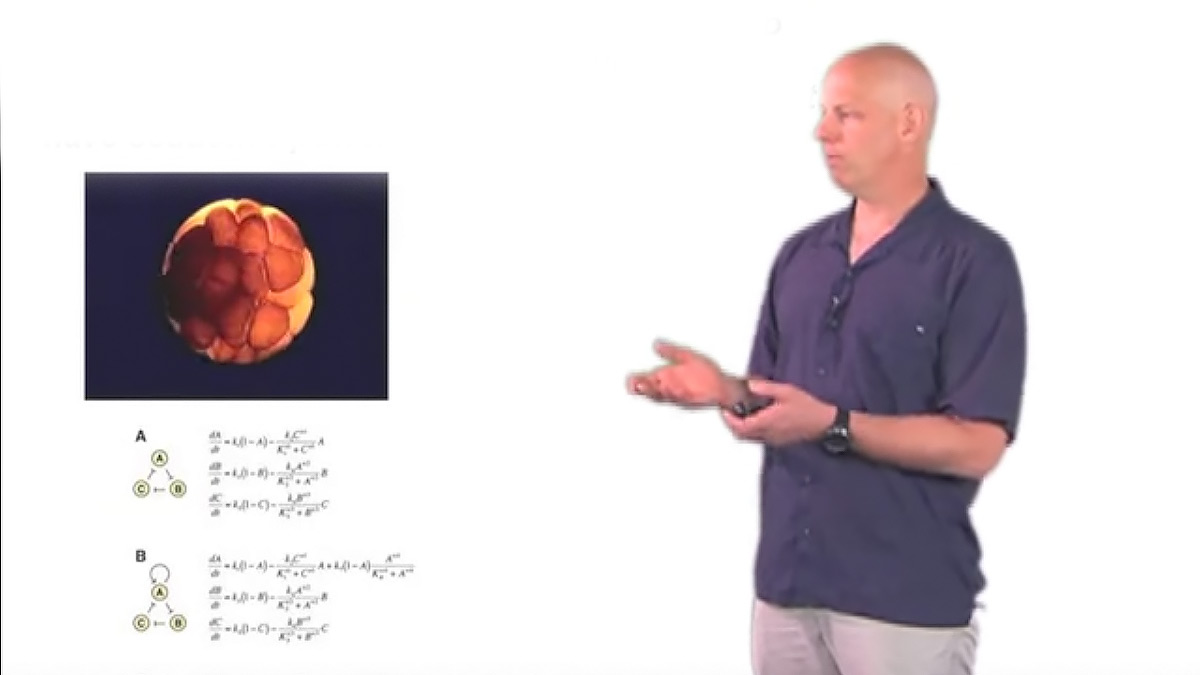
Related Resources
M. Alley. (2003) The Craft of Scientific Presentations. Springer.
P. Kenny (1982) A Handbook of Public Speaking for Scientists and Engineers. Institute of Physics Publishing.
Reader Interactions
Monzur Hossain says
March 15, 2019 at 10:30 am
Just wonderful and motivating
May 10, 2023 at 5:00 am
Thanks a lot.
Leave a Reply Cancel reply
Your email address will not be published. Required fields are marked *
Find a Video
- Search All Videos
- Search YouTube
- Short Films
- All Playlists
- All Speakers
- Videos in Other Languages
- Biochemistry
- Bioengineering
- Cell Biology
- CRISPR-Cas Technology
- Development and Stem Cells
- Genetics and Gene Regulation
- Human Disease
- Microbiology
- Neuroscience
- Plant Biology
- Professional Development
For Educators
- Educator Newsletter
- Educator Resources
- Flipped Courses
- Online Courses Resources
- All Educator Resources
Educators Recommend
- Cells of the Immune System
- Discovering Cell Cycle Regulators
- Genome Engineering with CRISPR-Cas9
- Hardy-Weinberg Equilibrium
- Next Generation Sequencing
- Semi-Conservative Replication of DNA
- Toll-Like Receptors in Adaptive Immunity
Free Courses
- Free Online Courses
- Take a Free Course
- Learn Microscopy
- Intro to Microscopy
Career Development
- Professional Development Courses
- Professional Development Talks
- Career Exploration
- Biomedical Workforce
- NRMN Resources
Best of iBiology
- Short Science Films
- Meselson and Stahl
- Doudna & Charpentier’s Nobel Prize
- Decoding Ancestral Knowledge
- Microscopy Series
- Short Microscopy Series
- Famous Discoveries
- Bench to Bedside
- Share Your Research
- Our Mission
- Science Communication Lab
- Financial Conflict of Interest Policy
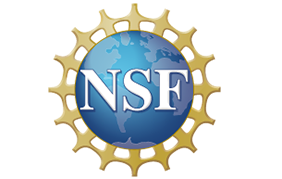
This service is more advanced with JavaScript available
How to Deliver Great Scientific Presentations A Guide for Scientists and Engineers
- Jean-Philippe Dionne
Continuing in
How to Deliver Great Scientific Presentations
This is a preview of subscription content
Your browser needs to be JavaScript capable to view this video
Try reloading this page, or reviewing your browser settings
You're watching a preview of subscription content. Log in to check access
- View contents
- Details Details
- Transcript Transcript
- Contents Table of contents
This video provides concise and effective tips spanning all relevant areas to deliver engaging scientific presentations. You will strengthen your skills in preparing, practicing and delivering presentations at both physical and virtual conferences and seminars. Best practices for structuring presentations and elements to include and those to exclude such as detailed sections on the use of videos, animations and tables are included. Common errors often seen in scientific presentations are highlighted along with tips on how to interact with audiences and keep them engaged. This will be a valuable resource for scientists in all areas of chemistry and materials science as well as engineers who wish to elevate their scientific presentations.
Introduction
A straight to the point video providing concise and effective tips spanning all relevant areas to delivering engaging scientific presentations.
About The Author

Jean-Philippe Dionne, Ph.D. in Mechanical Engineering (McGill University, Canada) has authored a number of scientific publications (conference proceedings, journal or magazine articles) in the field of personal protective equipment during his 20-year career in the industry. He has spent countless hours preparing and delivering presentations for scientific conferences and other events in various forms throughout his career.
About this video
Related content, presentation skills for scientists and engineers the slide master.
- Dr. Jean-Philippe Dionne
Video Transcript
[MUSIC PLAYING]
It strikes me every time I attend scientific conferences to realize that most presenters definitely stars in their respective domains of research. There are representations that are either boring, way too complex, or both. It’s great to spend 10 years of one’s life at University to get some prestigious degree, but why isn’t any time spent on learning how to give effective presentations?
Great speakers are entertaining and instill confidence. But despite their speaking skills, their message might not get across properly if they rely on poor visual backup. On the brighter side, even a poor public speaker with a shaky mastery of the language can deliver a great and well-structured talk if backed up by the appropriate visual.
Towards that goal, the following video segments are filled with many tricks and tips provided in a very concise manner. The main sections to be covered are some basics to get us started, animations, images and videos, graphs– they rarely get the attention they deserve– tables, maths in equations– always intimidating– structure of your talk, interactions, practice tricks, planning, and delivery– the few terrifying minutes on the stage.
My name is Jean-Philippe Dionne– PhD in mechanical engineering, working in industry with more than 20 years experience delivering scientific presentation, as well as an acute observer of other people’s presentations. I’m confident that all those following the advice provided here, whether young undergrads or seasoned scientists, are likely to benefit from these videos. Let’s proceed.
Your browser is not supported
Sorry but it looks as if your browser is out of date. To get the best experience using our site we recommend that you upgrade or switch browsers.
Find a solution
- Skip to main content
- Skip to navigation
- hot-topics Extras
- Newsletters
- Reading room
Tell us what you think. Take part in our reader survey
Celebrating twenty years
- Back to parent navigation item
- Collections
- Water and the environment
- Chemical bonding
- Antimicrobial resistance
- Energy storage and batteries
- AI and automation
- Sustainability
- Research culture
- Nobel prize
- Food science and cookery
- Plastics and polymers
- Periodic table
- Coronavirus

- More from navigation items

Source: © Shutterstock
How to give a scientific presentation
By Manisha Lalloo 2017-09-20T13:27:00+01:00
Five tips to keep an audience engaged without using cat pictures
Whether lecturing, presenting results at a conference or applying for a research proposal, giving presentations are a way of life for any chemist. But what are the best ways to get your point across while keeping your audience interested?

Think about your audience and remember that they want you to succeed
Jacquie Robson, is an associate professor of teaching at Durham University, UK, while Paul Bader is creative director at Screenhouse, an organisation which regularly trains scientists on how to develop better presentation skills. Here are their top tips.
Think about your audience
Whether presenting to colleagues or the general public, remember not everyone in your audience will be specialists. A common mistake scientists make is to assume others know as much as them when – more often than not – they are the expert in the room.
Even if your audience is well versed in the topic – for example, if you are presenting to a funding committee – do not start off with complex details. ‘If one person on the panel is outside the field, then you’ve lost them at the beginning,’ says Bader. Remember to give the big picture: it’s a good way in and a great way to make an impact.
Tell a story
‘Stories are easy to listen to and easy to tell,’ says Bader, who believes one of the most common mistakes is to cram too much information into just one talk. Structuring your talk in this way will help you to be selective.
Robson and Bader advise against learning a script by rote or reading a sheet of prose aloud. Written text is often more formal than convoluted than speech and sounds unnatural. Instead, have a set of key points on cue cards or use your slides as aide-mémoires. With a strong narrative, one point will lead to the next, making your talk more logical to follow and simpler to remember.
Robson also suggests telling your audience what you are going to speak about at the beginning of your talk and finishing off with a summary. That way your audience hears your main points three times – at the beginning, middle and end.
Visual aids are key
While PowerPoint is almost a given in today’s scientific presentations, try not to rely on it too much. ‘Slides should be clear, uncluttered and readable,’ says Robson. ‘Use diagrams rather than text.’
Slides should be used to highlight key points, not replicate your talk in written form. And remember never to turn your back on the audience – otherwise will be giving your presentation to the screen instead.
Don’t forget body language
‘Think about how you present yourself,’ says Robson. Have an open stance, smile, maintain eye contact, speak to the back of the room and at a good volume. ‘If you act confidently, they won’t know you’re feeling nervous.’
One of Robson’s pet peeves is a speaker who distracts the audience, for example by chewing gum or overusing laser pointers. Try to identify any habits you have while speaking that might take your audience’s attention away from your talk.
If you are feeling anxious, Robson advises against holding pieces of paper, which might shake in your hands. Bader suggests taking a moment to breathe. And both say the best technique is to ignore your nerves. The audience doesn’t want you to fail, and often won’t notice slip-ups. If you do make a big mistake, just correct yourself and carry on.
Practice, practice, practice
Perhaps the most important tip is to go through your presentation out loud before delivering it on the day.
‘People spend a lot of time writing their presentation or working on their slides but often the first time in public is the first time [they] do it,’ says Bader. By practising in advance and timing your run-throughs, you can discover if your talk is too long or too complicated.
There are many ways to practice, and it’s important to find the technique that works for you: you could video yourself on a phone and play it back, speak to yourself in front of a mirror or get somebody to listen to a rehearsal. According to Bader, the best way is to deliver your talk to a colleague or friend as you can see which parts they are engaged with (or not). ‘[But] any of the above is better than doing nothing,’ he adds.
And what about the dreaded questions at the end? ‘You can’t prepare for questions, so don’t fret,’ says Robson. ‘It’s not a spot exam, it’s a discussion. Make it into a conversation and don’t be afraid of saying “I don’t know the answer”.’
- Careers advice
- conferences
Related articles

Troubleshooting your career
2024-04-10T13:30:00Z
By Emma Pewsey

How to troubleshoot experiments
2024-04-10T08:43:00Z
By Victoria Atkinson
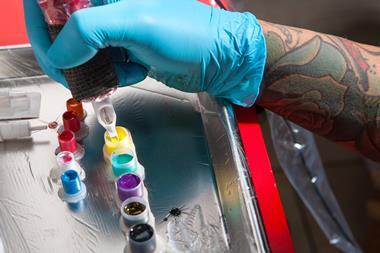
Using analytical chemistry to illuminate the unlisted ingredients in tattoo inks
2024-04-09T11:16:00Z
By Rebecca Trager

A sustainable career in sustainability
2024-03-28T14:28:00Z
By Julia Robinson

Universities in the UK beat national average on gender pay gap but large discrepancies remain
2024-03-22T14:30:00Z

Making science communication persuasive and engaging
2024-03-21T09:30:00Z
By Philipp Gramlich
1 Reader's comment
Only registered users can comment on this article., more from careers.

Losing a job can make you question who you are
2024-03-07T14:30:00Z

The community of colleagues supporting each other through redundancy
2024-03-07T09:31:00Z

How to deal with being made redundant
2024-03-07T09:30:00Z

Seven musicians who you might not know are chemists
2024-02-16T14:20:00Z

When should you declare your feelings for a colleague?
2024-02-13T11:20:00Z

How to write a PhD thesis
2024-02-01T14:30:00Z
By Zahra Khan
- Contributors
- Terms of use
- Accessibility
- Permissions
- This website collects cookies to deliver a better user experience. See how this site uses cookies .
- This website collects cookies to deliver a better user experience. Do not sell my personal data .
- Este site coleta cookies para oferecer uma melhor experiência ao usuário. Veja como este site usa cookies .
Site powered by Webvision Cloud
- PRO Courses Guides New Tech Help Pro Expert Videos About wikiHow Pro Upgrade Sign In
- EDIT Edit this Article
- EXPLORE Tech Help Pro About Us Random Article Quizzes Request a New Article Community Dashboard This Or That Game Popular Categories Arts and Entertainment Artwork Books Movies Computers and Electronics Computers Phone Skills Technology Hacks Health Men's Health Mental Health Women's Health Relationships Dating Love Relationship Issues Hobbies and Crafts Crafts Drawing Games Education & Communication Communication Skills Personal Development Studying Personal Care and Style Fashion Hair Care Personal Hygiene Youth Personal Care School Stuff Dating All Categories Arts and Entertainment Finance and Business Home and Garden Relationship Quizzes Cars & Other Vehicles Food and Entertaining Personal Care and Style Sports and Fitness Computers and Electronics Health Pets and Animals Travel Education & Communication Hobbies and Crafts Philosophy and Religion Work World Family Life Holidays and Traditions Relationships Youth
- Browse Articles
- Learn Something New
- Quizzes Hot
- This Or That Game New
- Train Your Brain
- Explore More
- Support wikiHow
- About wikiHow
- Log in / Sign up
- Education and Communications
How to Present a Science Project
Last Updated: August 17, 2023 Fact Checked
This article was co-authored by Meredith Juncker, PhD . Meredith Juncker is a PhD candidate in Biochemistry and Molecular Biology at Louisiana State University Health Sciences Center. Her studies are focused on proteins and neurodegenerative diseases. This article has been fact-checked, ensuring the accuracy of any cited facts and confirming the authority of its sources. This article has been viewed 53,185 times.
After creating a science project , you’ll likely have to present your work to your class or at a science fair. Try to give yourself a few weeks to plan and put together your presentation. Outline your main points, make note cards, and practice ahead of time. Make a clear, neat display board or PowerPoint presentation. When it comes time to present, relax, speak clearly and loudly, and avoid reading your presentation word for word.
Putting Together Your Presentation

- Finish up your experiment, research, and other aspects of your project.
- Get the materials you’ll need for your display board.
- Start to imagine how you’ll organize your information.

- An introduction to your topic or the problem you’ve addressed.
- How the problem impacts the real world (such as how a better understanding of the issue can impact humans).
- Your hypothesis, or what you expected to learn about through your experiment.
- The research you did to learn more about your topic.
- The Materials that you used in your project.
- Each step of your experiment’s procedure.
- The results of your experiment.
- Your conclusion, including what you learned and whether your data supports your hypothesis.

- When writing your speech, try to keep it simple, and avoid using phrases that are more complicated than necessary. Try to tailor the presentation to your audience: will you be presenting to your class, judges, a higher grade than yours, or to an honors class?
- Writing out your presentation can also help you manage your time. For example, if you’re supposed to talk for less than five minutes, shoot for less than two pages.

- For example, if you've made a volcano, make sure you know the exact mix of chemicals that will create the eruption.

Creating Your Display Board

- When you purchase your board, you should also acquire other materials, like a glue stick, construction paper, a pencil, markers, and a ruler.

- Consider using the top left corner for your topic introduction, the section under that for your hypothesis, and the bottom left section to discuss your research.
- Use the top right corner to outline your experiment’s procedure. List your results underneath, and finally, put the section with your conclusion under the results.

- Be sure to use a dark font color that’s easy to see from a distance.
- You can also write everything out by hand. Draft your lettering in pencil before using a pen or marker, and use a ruler to make sure everything is straight.

- Before gluing anything, make sure you plan out each section’s position and are sure everything will fit without looking cluttered. Use rulers to make sure everything is positioned evenly.

- Consider including 1 slide for each section, like 1 for the title of your project, 1 for your hypothesis, and 1 that outlines each main point of your research. If a slide becomes too dense, break it down by concept.
- Limit the text to 1 line and include a visual aid, like an image or a graph, that demonstrates the concept or explains the data. [6] X Research source
Giving a Great Presentation

- Take the time to iron your clothes and tuck your shirt in to avoid looking sloppy.

- It’s a good idea to use the restroom before you have to present your project.

- It can be really hard to resist, but try to avoid saying “um” or “uh” during your presentation.
- Speaking when you have a dry mouth can be difficult, so it’s a good idea to keep a water bottle handy.

- Remember it’s better to be honest if you don't know how to answer a question instead of making something up. Ask the person who asked the question to repeat or rephrase it, or say something like, "That's certainly an area I can explore in more detail in the future."
Community Q&A
You Might Also Like

- ↑ https://www.opencolleges.edu.au/informed/teacher-resources/science-fair-projects/#sciencefairpresentation
- ↑ https://www.youtube.com/watch?v=4KVTLT6QeTE
- ↑ https://www.youtube.com/watch?v=NHXidlH-dBw
- ↑ https://www.youtube.com/watch?v=g3hT6Ocf39w
- ↑ https://www.sciencebuddies.org/science-fair-projects/science-fair/judging-tips-to-prepare-science-fair
About This Article

- Send fan mail to authors
Reader Success Stories
Shruti Choudhary
Dec 17, 2017
Did this article help you?

Dec 11, 2017
Dec 5, 2016
Feb 5, 2017
Oct 13, 2017

Featured Articles

Trending Articles

Watch Articles

- Terms of Use
- Privacy Policy
- Do Not Sell or Share My Info
- Not Selling Info
wikiHow Tech Help Pro:
Level up your tech skills and stay ahead of the curve
An official website of the United States government
The .gov means it’s official. Federal government websites often end in .gov or .mil. Before sharing sensitive information, make sure you’re on a federal government site.
The site is secure. The https:// ensures that you are connecting to the official website and that any information you provide is encrypted and transmitted securely.
- Publications
- Account settings
Preview improvements coming to the PMC website in October 2024. Learn More or Try it out now .
- Advanced Search
- Journal List
- Lippincott Open Access

How to deliver an oral presentation
Georgina wellstead.
a Lister Hospital, East and North Hertfordshire NHS Trust
Katharine Whitehurst
b Royal Devon and Exeter Hospital
Buket Gundogan
c University College London
d Guy's St Thomas' NHS Foundation Trust, London, UK
Delivering an oral presentation in conferences and meetings can seem daunting. However, if delivered effectively, it can be an invaluable opportunity to showcase your work in front of peers as well as receive feedback on your project. In this “How to” article, we demonstrate how one can plan and successfully deliver an engaging oral presentation.
Giving an oral presentation at a scientific conference is an almost inevitable task at some point during your medical career. The prospect of presenting your original work to colleagues and peers, however, may be intimidating, and it can be difficult to know how to approach it. Nonetheless, it is important to remember that although daunting, an oral presentation is one of the best ways to get your work out there, and so should be looked upon as an exciting and invaluable opportunity.
Slide content
Although things may vary slightly depending on the type of research you are presenting, the typical structure is as follows:
- Opening slide (title of study, authors, institutions, and date)
- Methodology
- Discussion (including strengths and weaknesses of the study)
Conclusions
Picking out only the most important findings to include in your presentation is key and will keep it concise and easy to follow. This in turn will keep your viewers engaged, and more likely to understand and remember your presentation.
Psychological analysis of PowerPoint presentations, finds that 8 psychological principles are often violated 1 . One of these was the limited capacity of working memory, which can hold 4 units of information at any 1 time in most circumstances. Hence, too many points or concepts on a slide could be detrimental to the presenter’s desire to give information.
You can also help keep your audience engaged with images, which you can talk around, rather than lots of text. Video can also be useful, for example, a surgical procedure. However, be warned that IT can let you down when you need it most and you need to have a backup plan if the video fails. It’s worth coming to the venue early and testing it and resolving issues beforehand with the AV support staff if speaking at a conference.
Slide design and layout
It is important not to clutter your slides with too much text or too many pictures. An easy way to do this is by using the 5×5 rule. This means using no more than 5 bullet points per slide, with no more than 5 words per bullet point. It is also good to break up the text-heavy slides with ones including diagrams or graphs. This can also help to convey your results in a more visual and easy-to-understand way.
It is best to keep the slide design simple, as busy backgrounds and loud color schemes are distracting. Ensure that you use a uniform font and stick to the same color scheme throughout. As a general rule, a light-colored background with dark-colored text is easier to read than light-colored text on a dark-colored background. If you can use an image instead of text, this is even better.
A systematic review study of expert opinion papers demonstrates several key recommendations on how to effectively deliver medical research presentations 2 . These include:
- Keeping your slides simple
- Knowing your audience (pitching to the right level)
- Making eye contact
- Rehearsing the presentation
- Do not read from the slides
- Limiting the number of lines per slide
- Sticking to the allotted time
You should practice your presentation before the conference, making sure that you stick to the allocated time given to you. Oral presentations are usually short (around 8–10 min maximum), and it is, therefore, easy to go under or over time if you have not rehearsed. Aiming to spend around 1 minute per slide is usually a good guide. It is useful to present to your colleagues and seniors, allowing them to ask you questions afterwards so that you can be prepared for the sort of questions you may get asked at the conference. Knowing your research inside out and reading around the subject is advisable, as there may be experts watching you at the conference with more challenging questions! Make sure you re-read your paper the day before, or on the day of the conference to refresh your memory.
It is useful to bring along handouts of your presentation for those who may be interested. Rather than printing out miniature versions of your power point slides, it is better to condense your findings into a brief word document. Not only will this be easier to read, but you will also save a lot of paper by doing this!
Delivering the presentation
Having rehearsed your presentation beforehand, the most important thing to do when you get to the conference is to keep calm and be confident. Remember that you know your own research better than anyone else in the room! Be sure to take some deep breaths and speak at an appropriate pace and volume, making good eye contact with your viewers. If there is a microphone, don’t keep turning away from it as the audience will get frustrated if your voice keeps cutting in and out. Gesturing and using pointers when appropriate can be a really useful tool, and will enable you to emphasize your important findings.
Presenting tips
- Do not hide behind the computer. Come out to the center or side and present there.
- Maintain eye contact with the audience, especially the judges.
- Remember to pause every so often.
- Don’t clutter your presentation with verbal noise such as “umm,” “like,” or “so.” You will look more slick if you avoid this.
- Rhetorical questions once in a while can be useful in maintaining the audience’s attention.
When reaching the end of your presentation, you should slow down in order to clearly convey your key points. Using phases such as “in summary” and “to conclude” often prompts those who have drifted off slightly during your presentation start paying attention again, so it is a critical time to make sure that your work is understood and remembered. Leaving up your conclusions/summary slide for a short while after stopping speaking will give the audience time to digest the information. Conclude by acknowledging any fellow authors or assistants before thanking the audience for their attention and inviting any questions (as long as you have left sufficient time).
If asked a question, firstly thank the audience member, then repeat what they have asked to the rest of the listeners in case they didn’t hear the first time. Keep your answers short and succinct, and if unsure say that the questioner has raised a good point and that you will have to look into it further. Having someone else in the audience write down the question is useful for this.
The key points to remember when preparing for an oral presentation are:
- Keep your slides simple and concise using the 5×5 rule and images.
- When appropriate; rehearse timings; prepare answers to questions; speak slowly and use gestures/ pointers where appropriate; make eye contact with the audience; emphasize your key points at the end; make acknowledgments and thank the audience; invite questions and be confident but not arrogant.
Conflicts of interest
The authors declare that they have no financial conflict of interest with regard to the content of this report.
Sponsorships or competing interests that may be relevant to content are disclosed at the end of this article.
Published online 8 June 2017

- SUGGESTED TOPICS
- The Magazine
- Newsletters
- Managing Yourself
- Managing Teams
- Work-life Balance
- The Big Idea
- Data & Visuals
- Reading Lists
- Case Selections
- HBR Learning
- Topic Feeds
- Account Settings
- Email Preferences
How to Make a “Good” Presentation “Great”
- Guy Kawasaki

Remember: Less is more.
A strong presentation is so much more than information pasted onto a series of slides with fancy backgrounds. Whether you’re pitching an idea, reporting market research, or sharing something else, a great presentation can give you a competitive advantage, and be a powerful tool when aiming to persuade, educate, or inspire others. Here are some unique elements that make a presentation stand out.
- Fonts: Sans Serif fonts such as Helvetica or Arial are preferred for their clean lines, which make them easy to digest at various sizes and distances. Limit the number of font styles to two: one for headings and another for body text, to avoid visual confusion or distractions.
- Colors: Colors can evoke emotions and highlight critical points, but their overuse can lead to a cluttered and confusing presentation. A limited palette of two to three main colors, complemented by a simple background, can help you draw attention to key elements without overwhelming the audience.
- Pictures: Pictures can communicate complex ideas quickly and memorably but choosing the right images is key. Images or pictures should be big (perhaps 20-25% of the page), bold, and have a clear purpose that complements the slide’s text.
- Layout: Don’t overcrowd your slides with too much information. When in doubt, adhere to the principle of simplicity, and aim for a clean and uncluttered layout with plenty of white space around text and images. Think phrases and bullets, not sentences.
As an intern or early career professional, chances are that you’ll be tasked with making or giving a presentation in the near future. Whether you’re pitching an idea, reporting market research, or sharing something else, a great presentation can give you a competitive advantage, and be a powerful tool when aiming to persuade, educate, or inspire others.
- Guy Kawasaki is the chief evangelist at Canva and was the former chief evangelist at Apple. Guy is the author of 16 books including Think Remarkable : 9 Paths to Transform Your Life and Make a Difference.
Partner Center

IMAGES
VIDEO
COMMENTS
Related Articles. This guide provides a 4-step process for making a good scientific presentation: outlining the scientific narrative, preparing slide outlines, constructing slides, and practicing the talk. We give advice on how to make effective slides, including tips for text, graphics, and equations, and how to use rehearsals of your talk to ...
First is a two part set of videos that walks you through organizing a presentation. Part 1 - Creating an Introduction for a 10-15 Minute Scientfic Presentation. Part 2 - Creating the Body of a 10-15 Minute Presentation: Design/Methods; Data Results, Conclusions. Two additional videos should prove useful: Designing PowerPoint Slides for a ...
Below we propose a quick framework for creating a compelling scientific presentation in PowerPoint (+ some helpful templates!). 1. Open with a Research Question. Here's how to start a scientific presentation with ease: share your research question. On the first slide, briefly recap how your thought process went.
Below is the summary of how to give an engaging talk that will earn respect from your scientific community. Step 1. Draft Presentation Outline. Create a presentation outline that clearly highlights the main point of your research. Make sure to start your talk outline with ideas to engage your audience and end your talk with a clear take-home ...
Here are 10 tips to help you present your scientific work and leave the audience wanting more. 1. Set the stage. Get your equipment ready and run through your slides if possible (use the "speaker ready" room if one is available). If you've never been in the venue, try getting there early and walk the room.
Tip 3: Deliver your talk with intention. Tip 4: Be adaptable and willing to adjust your presentation. Tip 5: Conclude your talk and manage questions confidently. Concluding thoughts. Other sources to help you give a good scientific presentation. Frequently Asked Questions about giving scientific presentations.
Delivery. It is important to dress appropriately, stand up straight, and project your voice towards the back of the room. Practise using a microphone, or any other presentation aids, in advance. If you don't have your own presenting style, think of the style of inspirational scientific speakers you have seen and imitate it.
Simplify. The best science talks start with a process of simplifying - peeling back the layers of information and detail to get at the one core idea that you want to communicate. Over the course of your talk, you may present 2-3 key messages that relate to, demonstrate, provide examples of or underpin this idea.
Turning a research paper into a visual presentation is difficult; there are pitfalls, and navigating the path to a brief, informative presentation takes time and practice. As a TA for GEO/WRI 201: Methods in Data Analysis & Scientific Writing this past fall, I saw how this process works from an instructor's standpoint. I've presented my own ...
In the video below, we show you the key principles for designing effective PowerPoint slides for a scientific presentation. Using examples from actual science presentations, we illustrate the following principles: Create each slide as a single message unit. Explicitly state that single message on the slide. Avoid bullet points-opt for word tables.
Advancing your Scientific Presentations. For researchers in the natural sciences who want to improve the quality of their peer-to-peer scientific presentations with both virtual and face-to-face audiences. 10 experts who excel at presenting their work, including renowned presentation designers, and trainers and experts in narrative tools.
Tip #1: Know your audience. View the presentation as a dialogue with the audience rather than a monologue, and always consider the interests and expertise of your audience. This will help you tailor your scientific presentation to their level of knowledge and interests. Tip #2: Make use of PowerPoint.
A 10-15 Minute Scientific Presentation, Part 1: Creating an Introduction. For many young scientists, the hardest part of a presentation is the introduction. How do you set the stage for your talk so your audience knows exactly where you're going? Here's how: follow the the CCQH pattern -- C ontext, C omplication, Q uestion, H ypothesis. Fit ...
Scientific Presentations. Presenting science to an audience of peers is among the most fundamental of job skills. Yet, few scientists receive training in how to present, beyond the occasional ad hoc critique during the weekly lab meeting, or the odd rehearsal leading up to a thesis defense.
Here are his 10 keys to an engaging scientific presentation: 1) Be an Entertainer First: Before your science can wow your audience, they have to understand it. Before they can understand it, you must engage them with what you're saying. Look at your presentation from your audience's perspective and think about how they'll relate to your ...
Scientific presentation is a professional way of sharing your observation, introducing a hypothesis, demonstrating and interpreting the results of a study, or -summarizing what has been learned or is to be studied on the subject. Professional presentations help disseminate research, make peers aware of novel approaches, findings or problems.
Dr. McConnell gives helpful advice on preparing and presenting an effective scientific talk. She reviews the basics of PowerPoint or Key Note and gives advice on choosing fonts, colors and slide styles. She also recommends ways to structure your talk so the audience stays awake and engaged. Her final recommendation is practice, practice, practice!
Step 1: Identify your audience: this will control the level of your presentation and the amount of background material you need to orient everyone in the audience. Step 2: Determine how much time you have for your presentation: this will control how much time you have to talk about each part of your outline (see below) Step 3: Identify the main ...
Preparing an Effective Presentation. Brad R. Conrad, PhD, Director of SPS and Sigma Pi Sigma. Crafting an effective presentation has significant implications on how we best communicate science and can help propel a career to new heights. It is important to understand the keys to effectively presenting and communicating your work.
Contents. This video provides concise and effective tips spanning all relevant areas to deliver engaging scientific presentations. You will strengthen your skills in preparing, practicing and delivering presentations at both physical and virtual conferences and seminars. Best practices for structuring presentations and elements to include and ...
While PowerPoint is almost a given in today's scientific presentations, try not to rely on it too much. 'Slides should be clear, uncluttered and readable,' says Robson. 'Use diagrams rather ...
6. Practice making your presentation. First, practice by yourself or in a mirror. If you have a time limit, time yourself to make sure your presentation isn't too long or short. Ask your parents or a friend if you can present your project to them, and ask if they have any pointers. 7.
An easy way to do this is by using the 5×5 rule. This means using no more than 5 bullet points per slide, with no more than 5 words per bullet point. It is also good to break up the text-heavy slides with ones including diagrams or graphs. This can also help to convey your results in a more visual and easy-to-understand way.
When in doubt, adhere to the principle of simplicity, and aim for a clean and uncluttered layout with plenty of white space around text and images. Think phrases and bullets, not sentences. As an ...
Practice a 1- to 2-minute pitch until you feel comfortable. The poster and your pitch must be aimed at the audience that will be present. The clearer and more rational your poster layout, the easier it will then be for you to make a strong pitch. —Srinivas.